Vehicles are all around us, but how often do you think to photograph them? They’re so much part of our daily lives that we often forget they can make excellent subject matter for our photography. With their vibrant colors, dynamic shapes and endless diversity, vehicles are extremely photogenic and work particularly well for creating an interesting photo series. In this tutorial you’ll discover ten great tips for taking unique and creative iPhone photos of cars and other vehicles.
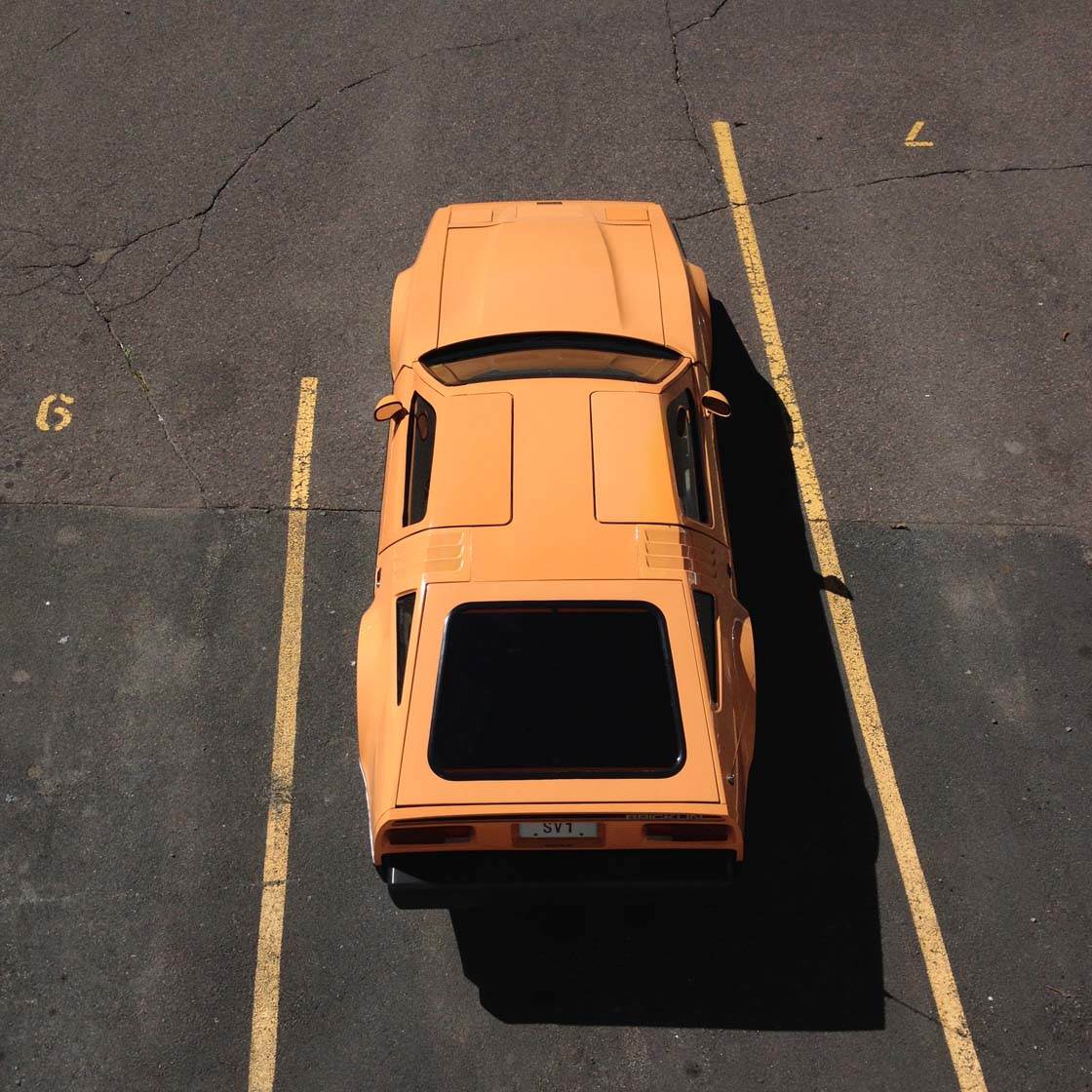
You don’t need to be a car enthusiast to choose vehicles for an iPhone photography series. Even if you have very limited interest in cars, the aim of this tutorial is to help you see vehicles almost as art.
By the end of this article you’ll be able to use a range of composition and photography techniques to make the most of these wonderful objects in your photography.
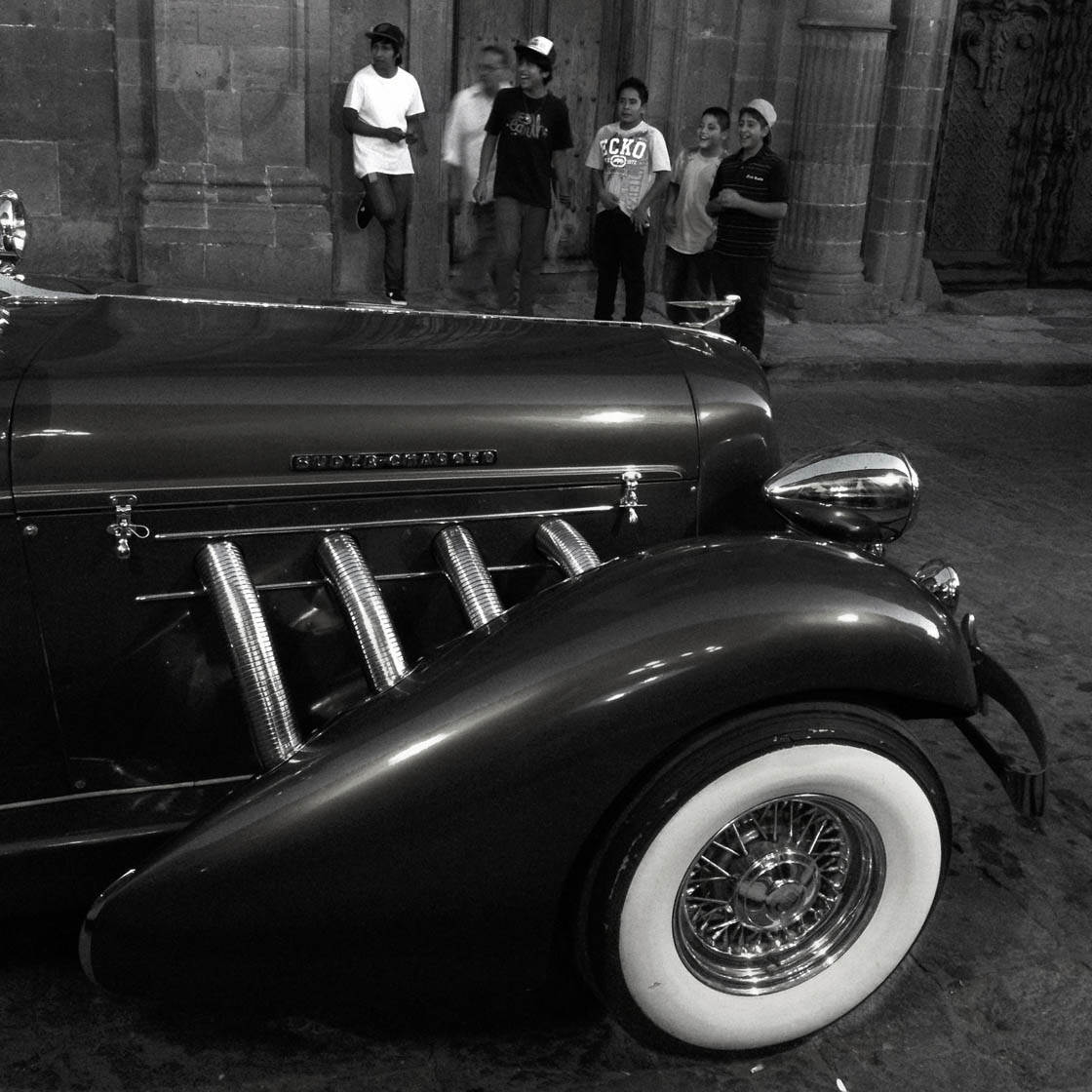
1. Shoot From Different Perspectives
One of the characteristics of great photography is that the viewer tends to visually linger a bit longer on a really good image.
If you can get your viewers to pause on your photo a bit longer than the hundreds of others that they scroll through each day, then you’ve done your job!
An effective way to get viewers to “stop” on your photos is to take your pictures from unusual perspectives. So rather than always shooting from eye level at standing height, think about other angles that you could shoot from.
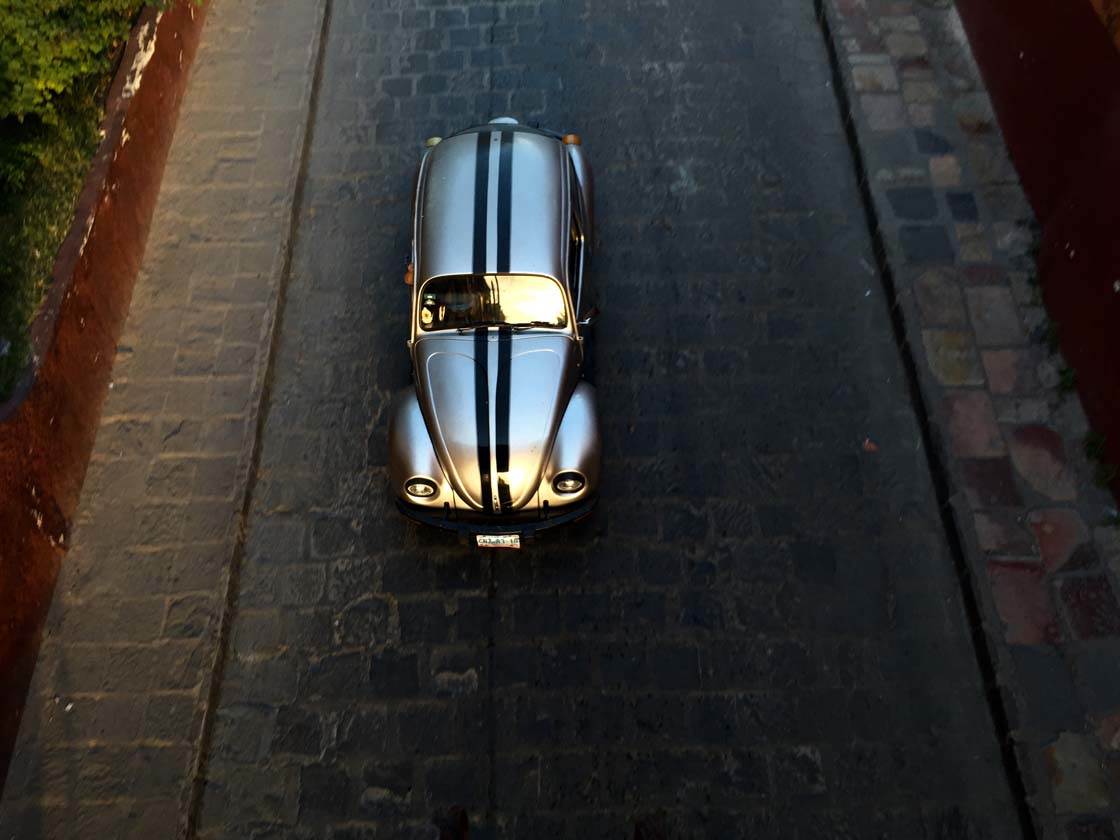
How about photographing a car from an aerial viewpoint such as a second story window or bridge overpass? This allows you to capture the vehicle from a vantage point that you don’t often see.
Notice how this shooting angle emphasizes the shape of the car. Using the ground as your backdrop is also a great way of eliminating distracting backgrounds.
Shooting from a high angle can also have the fun effect of making the car look like a miniature toy model because it appears small compared to its surroundings.
A completely different approach would be to shoot from a very low angle. Crouch down as low as you can, or even lie on the ground if it’s safe to do so!
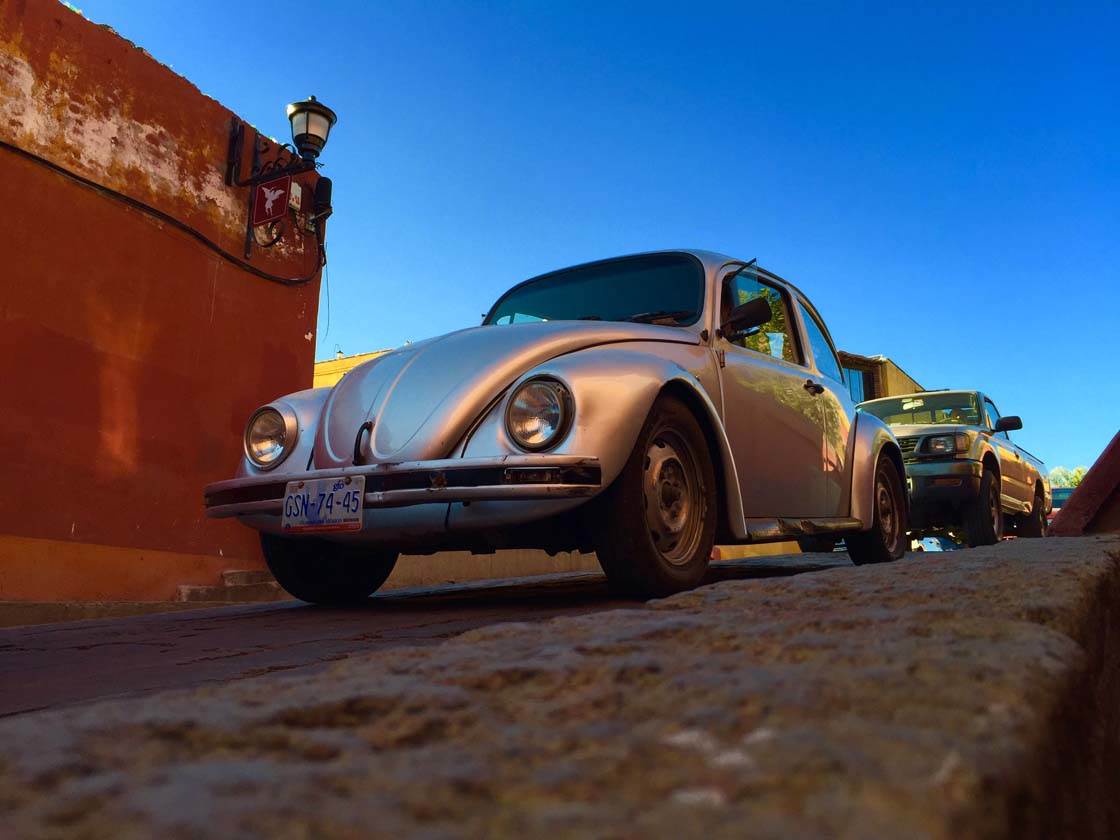
Rather than emphasizing the shape of the vehicle, a low shooting angle tends to focus the viewer’s attention on certain aspects of the vehicle such as the wheels and headlights.
Shooting your subject from a low angle tends to make them appear large and powerful. It’s also a great technique for getting more plain sky behind your subject.
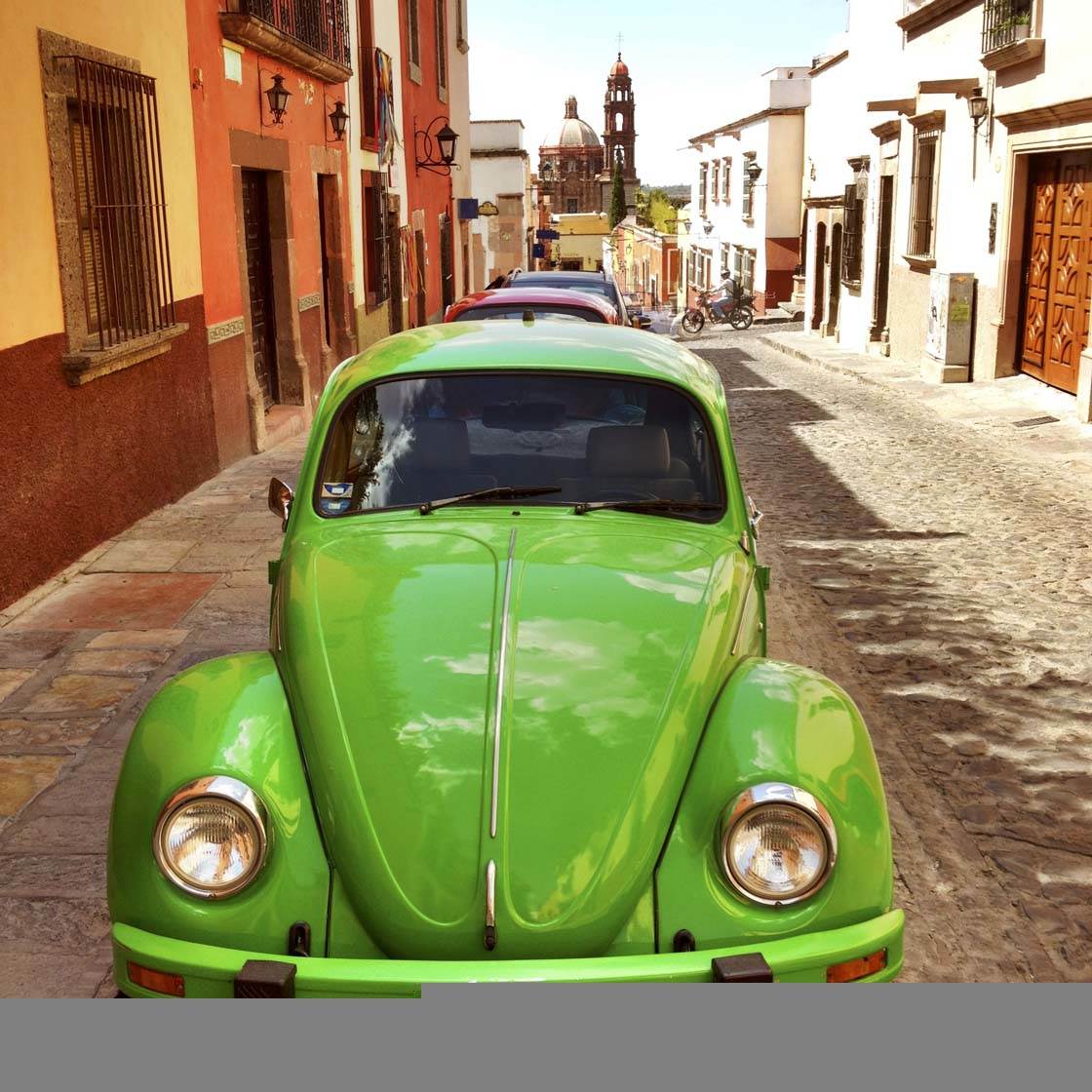
Another angle that works well is capturing the car from the front. This technique can give the car an almost human quality, with the headlights acting as eyes and the bumper as a mouth.
Capturing a side profile of the car places the emphasis on yet another shape or outline of the vehicle. Cars really can look so different depending on which side and angle you shoot them from.
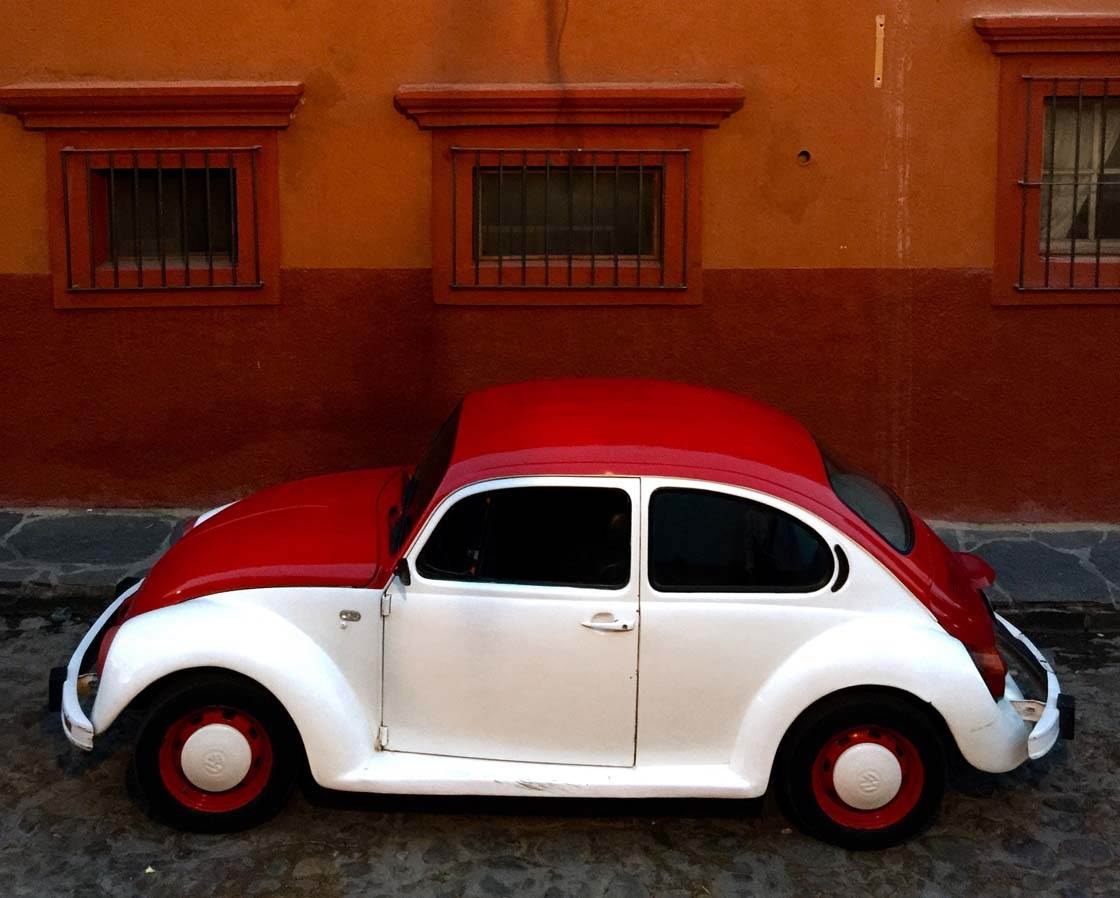
Whenever you spot an interesting car that you’d like to photograph, always explore as many different angles as possible to give you the best chance of creating a unique and eye-catching image.
Very few people take the time to practice different perspectives. By concentrating on this aspect of composition, your images will definitely stand out.
2. Select Your Background First
Another way to create visually powerful photographs of vehicles is to actually search out a good background first, and then wait for a car or other vehicle to enter the scene.
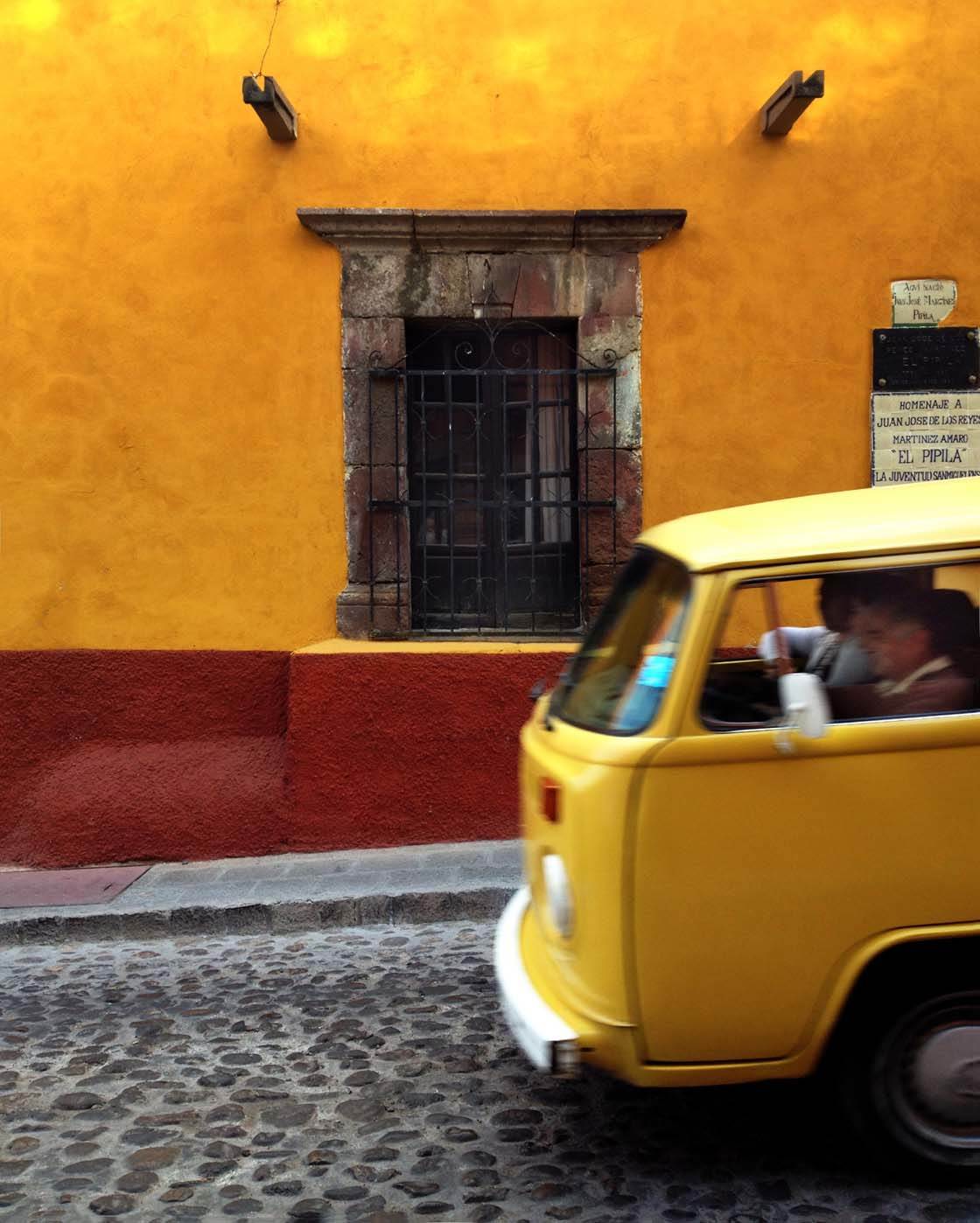
Look for a very cool, abnormal, colorful or interesting background, and then frame your shot. Think about using symmetry, leading lines, framing, etc. to create a strong composition that draws the viewer into the image.
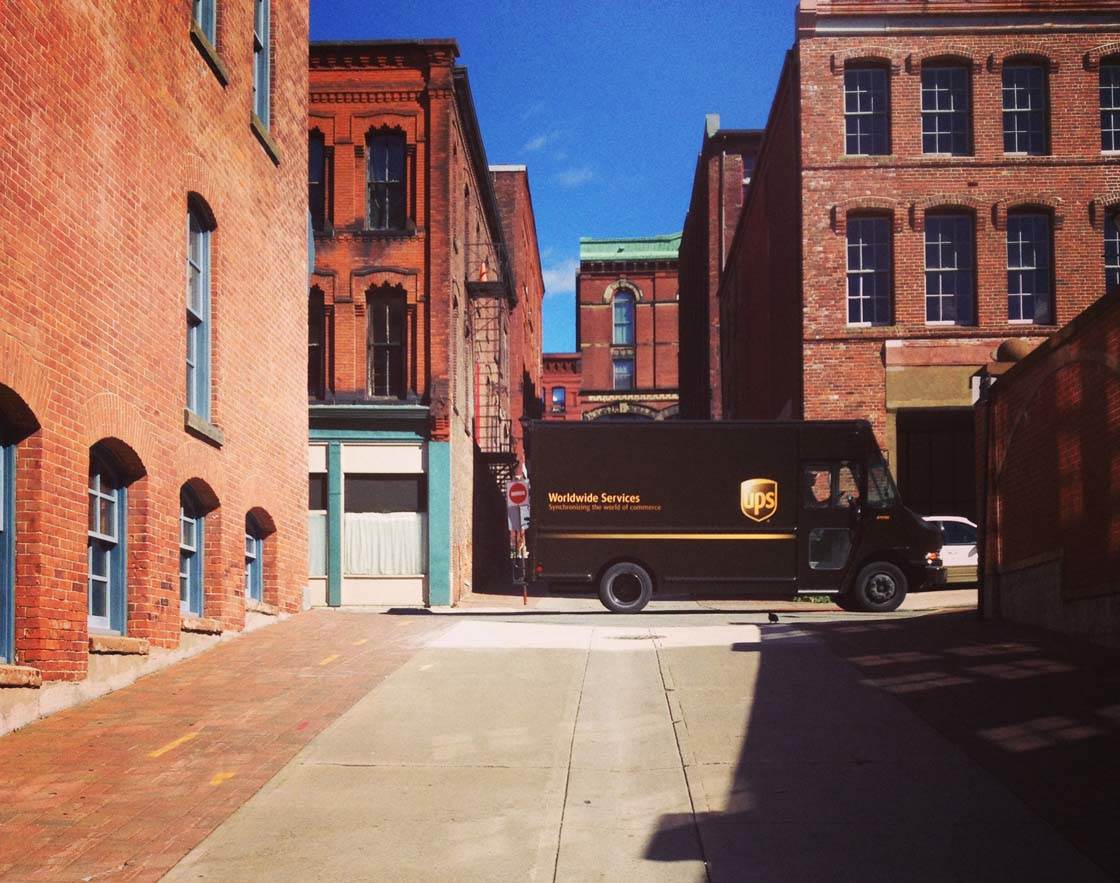
Set your focus point by tapping on the screen, and adjust the exposure if necessary by swiping up or down. Then wait in your chosen camera position for a vehicle to drive into your frame.
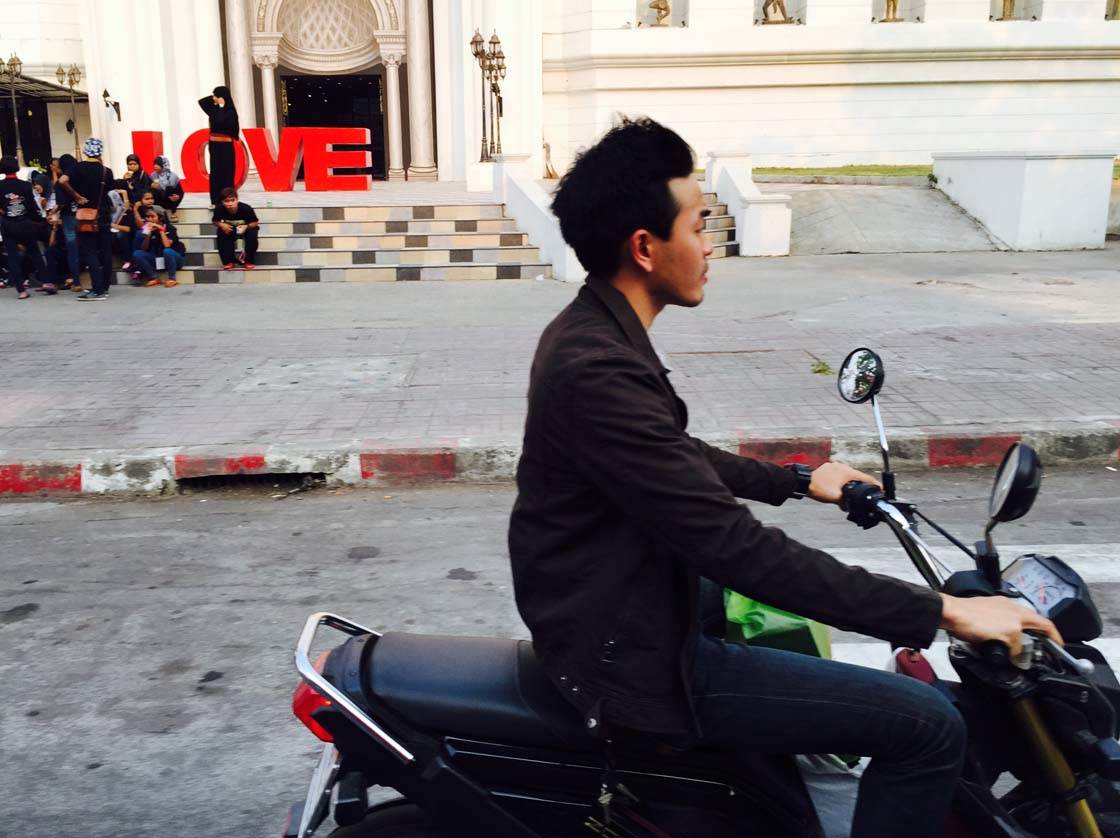
This waiting technique may take some patience. You might want to invest in a tripod for iPhone so that you don’t have to hold your phone the entire time.
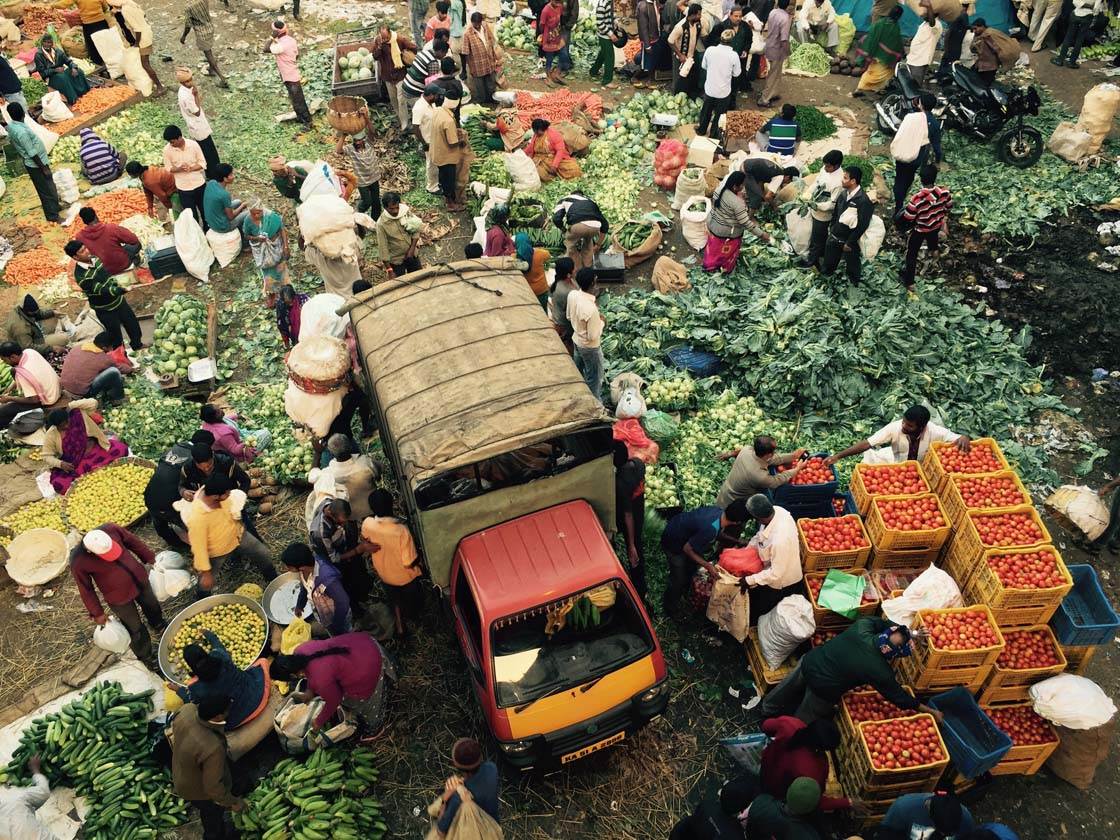
Even if you have to wait 15 to 20 minutes for a vehicle to drive into your frame, if the background is visually dynamic, it’ll be worth the wait for the great photos that you’ll capture.
3. Compose With Color
Regardless of whether your location has muted or colorful architectural exteriors, it’s the diversity of automobile colors that will give you great opportunities for composing with color.
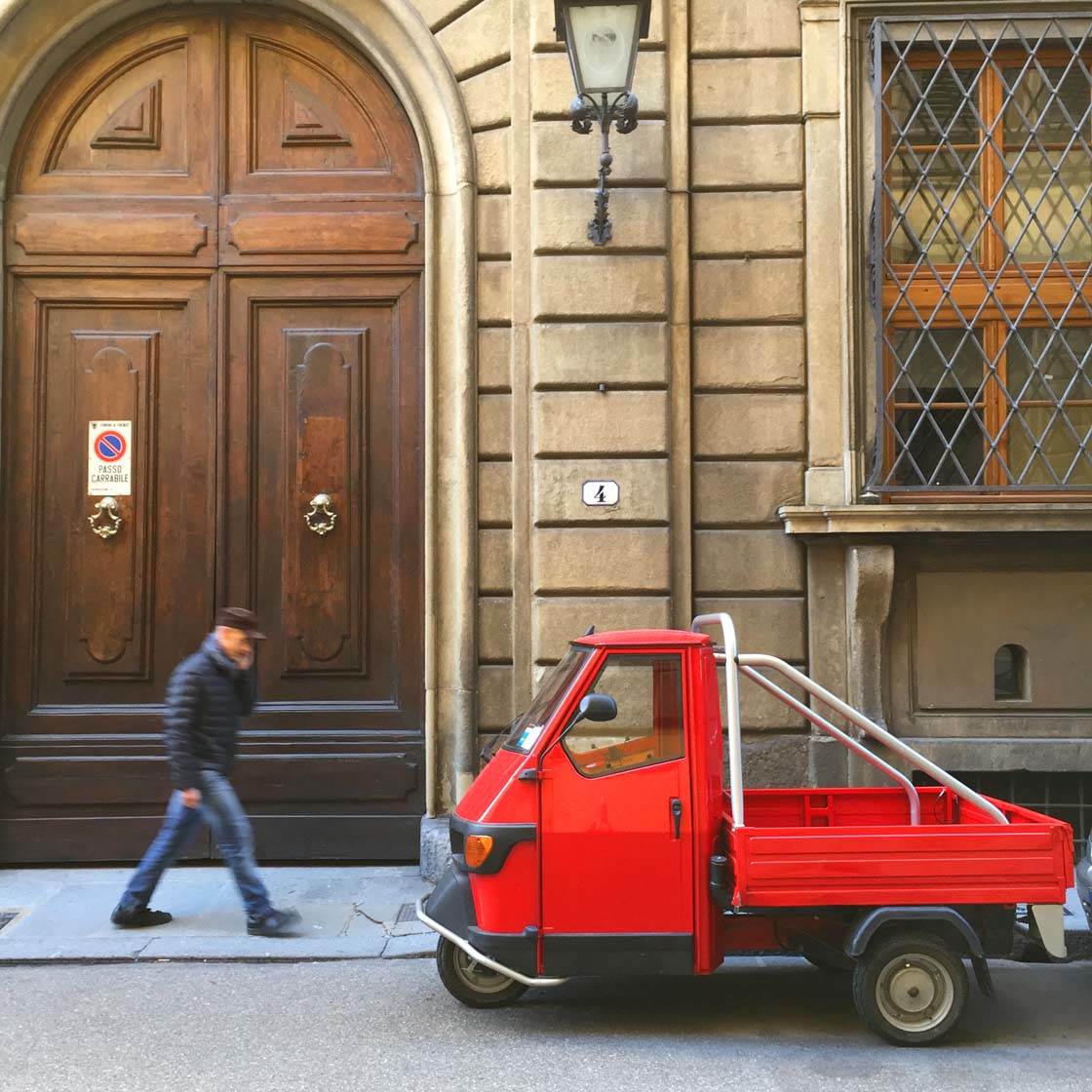
If you’re in a location that has sandstone or colorless concrete exteriors, look for punchy red, orange or yellow cars to create your vehicle “portrait.”
If you’re in a location that has a lot of colorful buildings as backdrops, look for colorful cars with paint jobs that are either harmonious with the background, or clash with the background.
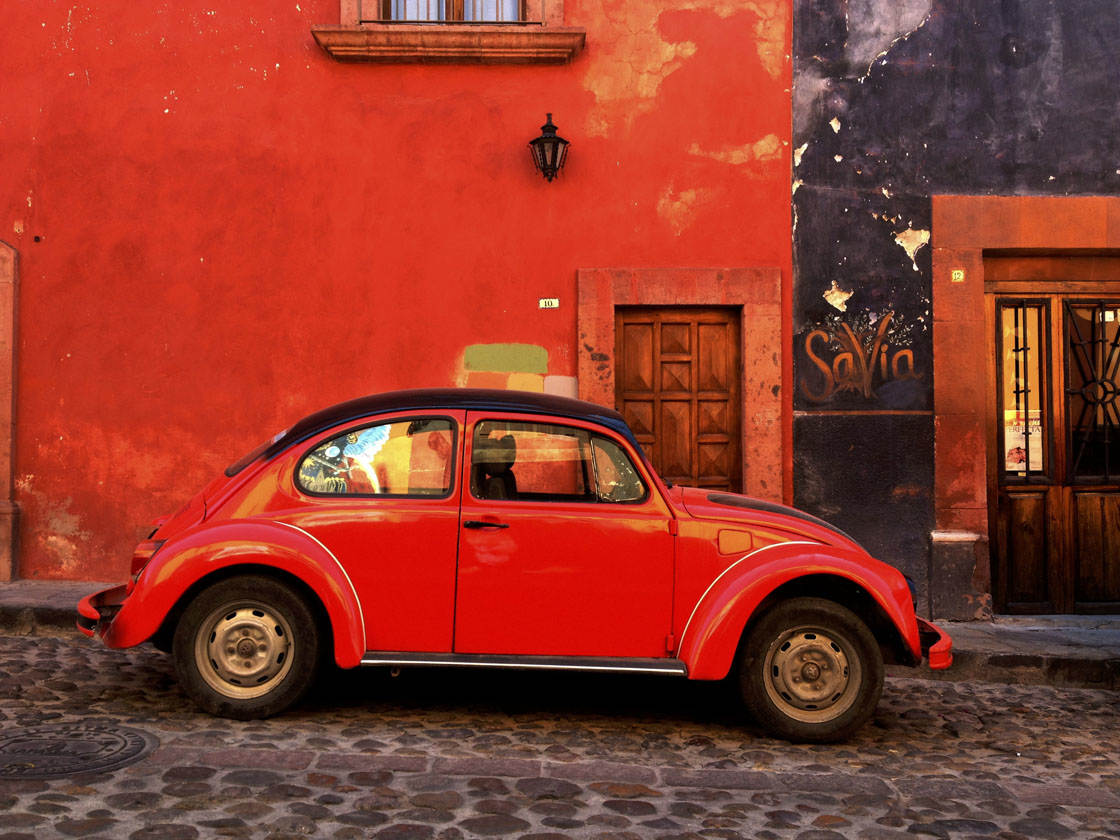
Both options are great as color, in all of its forms, is universally interesting to the viewer.
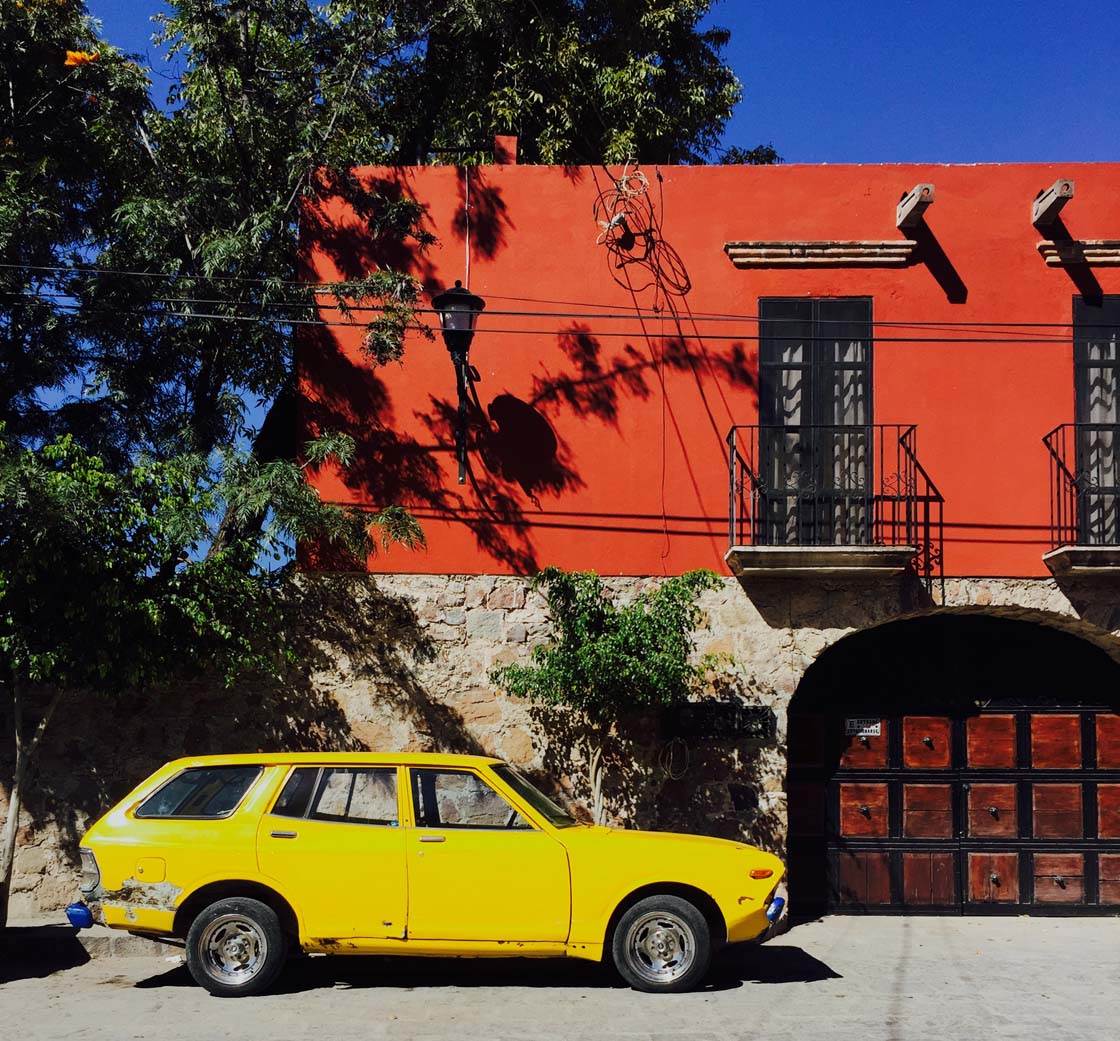
4. Search Out Abandoned & Rusty Cars
Camera clubs will often get permission from junk yard owners to spend some time photographing old rusting cars, but you can always seek them out yourself as well.
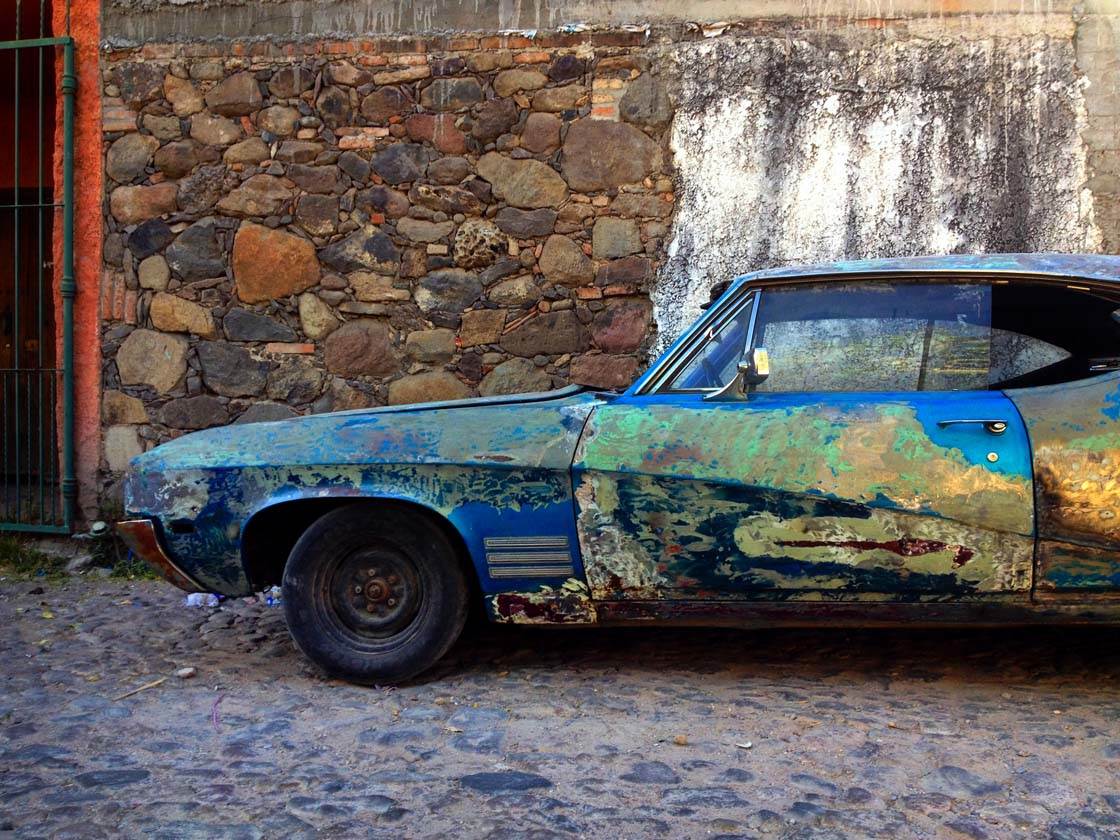
The combination of rust, peeling paint, and visual design allows for a multitude of photographic options. Try to see the junk cars as portrait subjects within their environment.
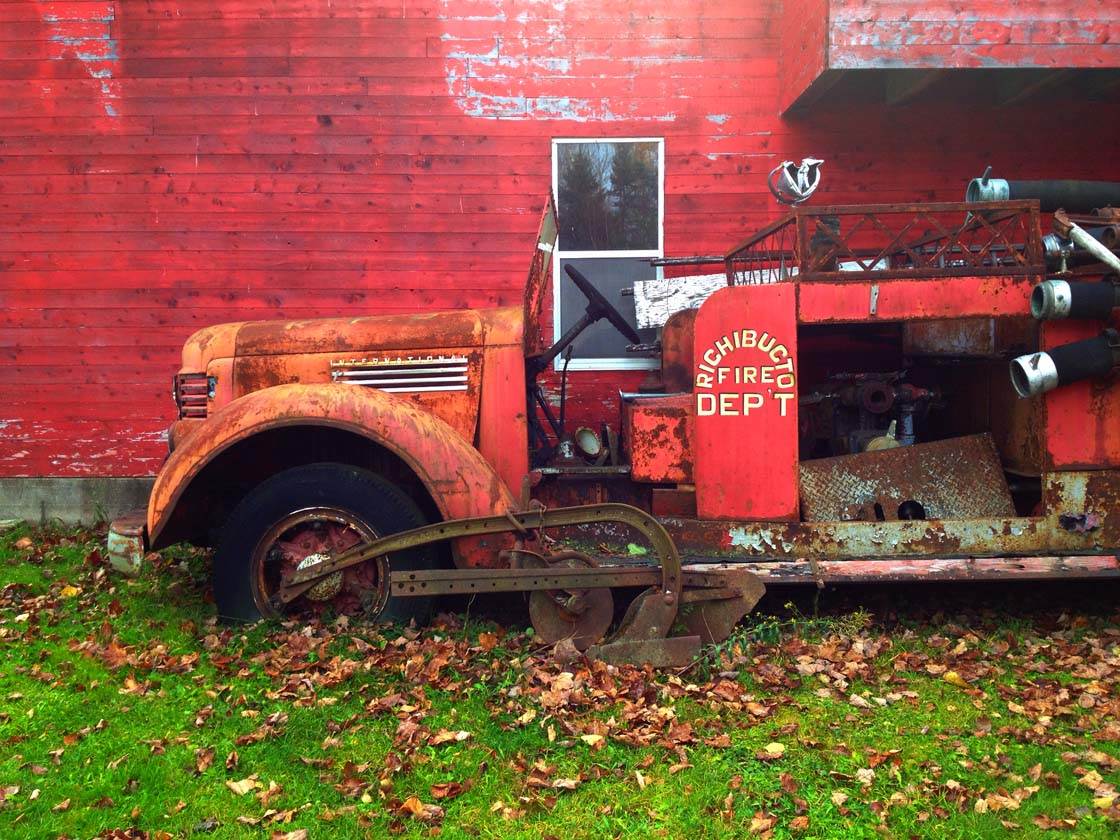
Ensure the background doesn’t distract the viewer’s attention from the vehicle. Experiment with different composition techniques and shooting angles. Practice close up photography of just the peeling paint and contours of the vehicle.
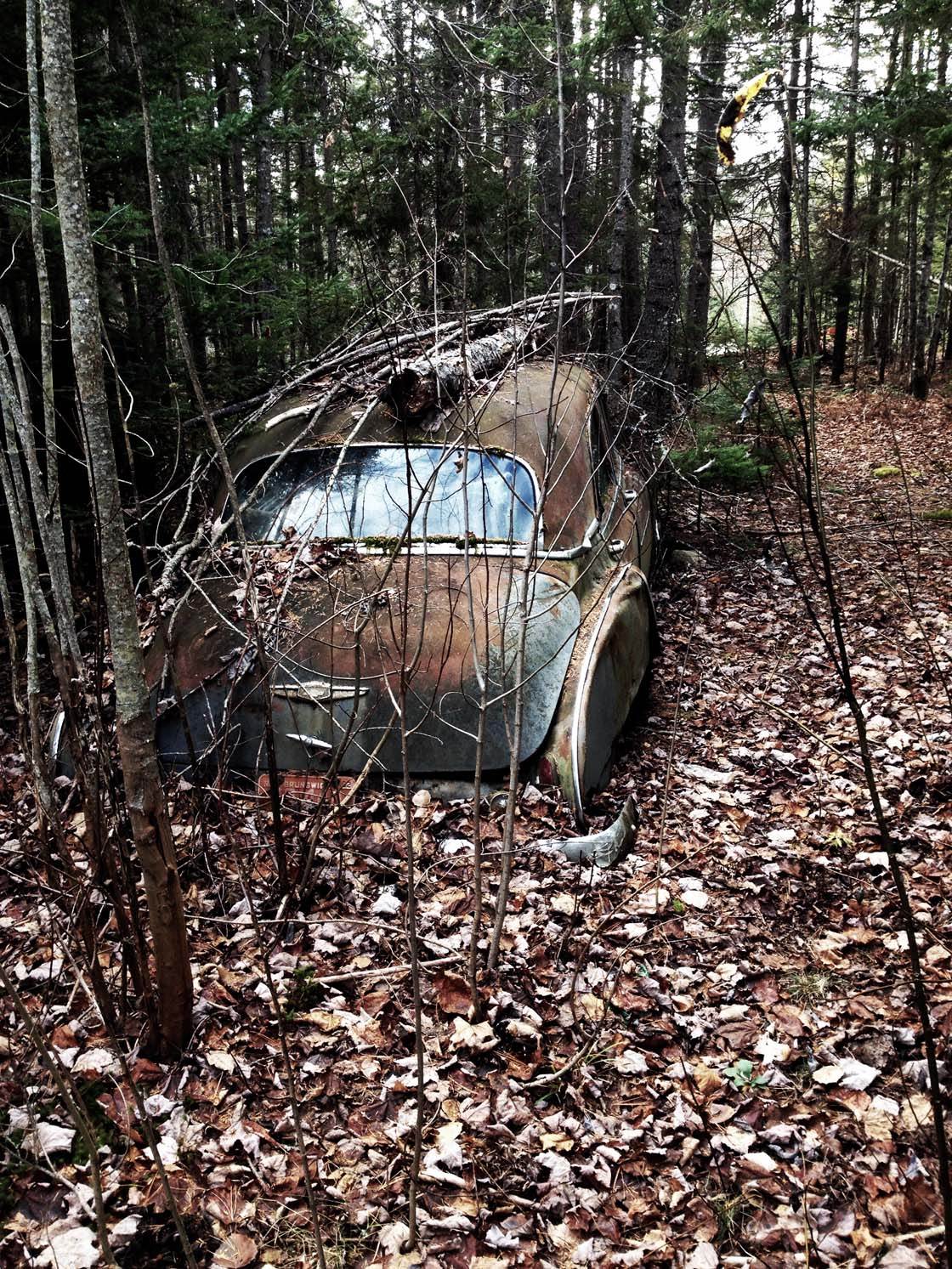
If you’re planning to shoot at a junk yard, remember that they’re private property, so always get permission first before entering the premises.
5. Search For Leading Lines
Leading lines are one of the most powerful compositional tool you can use in the world of art and photography. A simplistic definition would be any part of a picture space that leads the viewer’s eyes from one point to another.
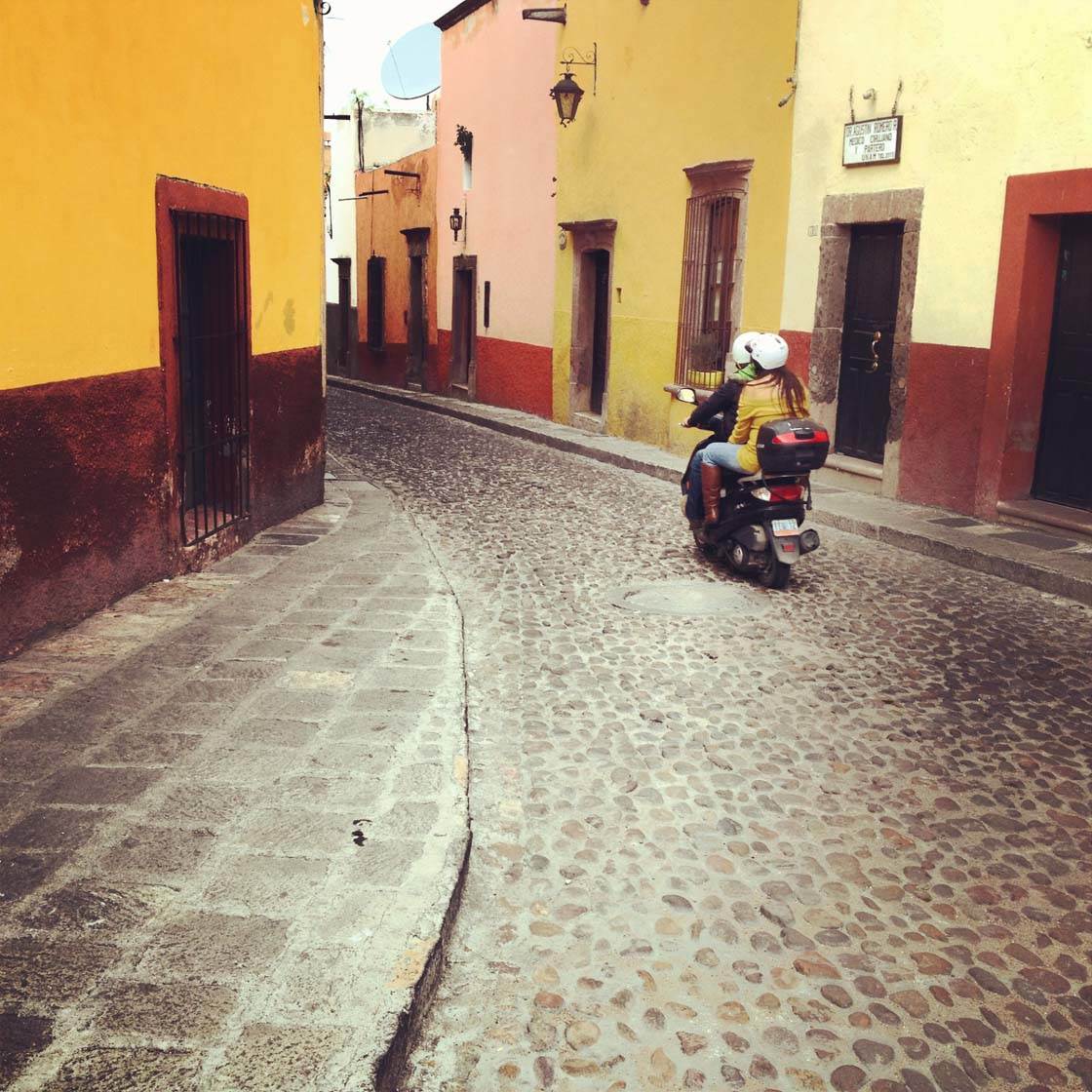
Leading lines create dynamic images that draw your eye into and around the scene. They add depth and a strong visual element to your images.
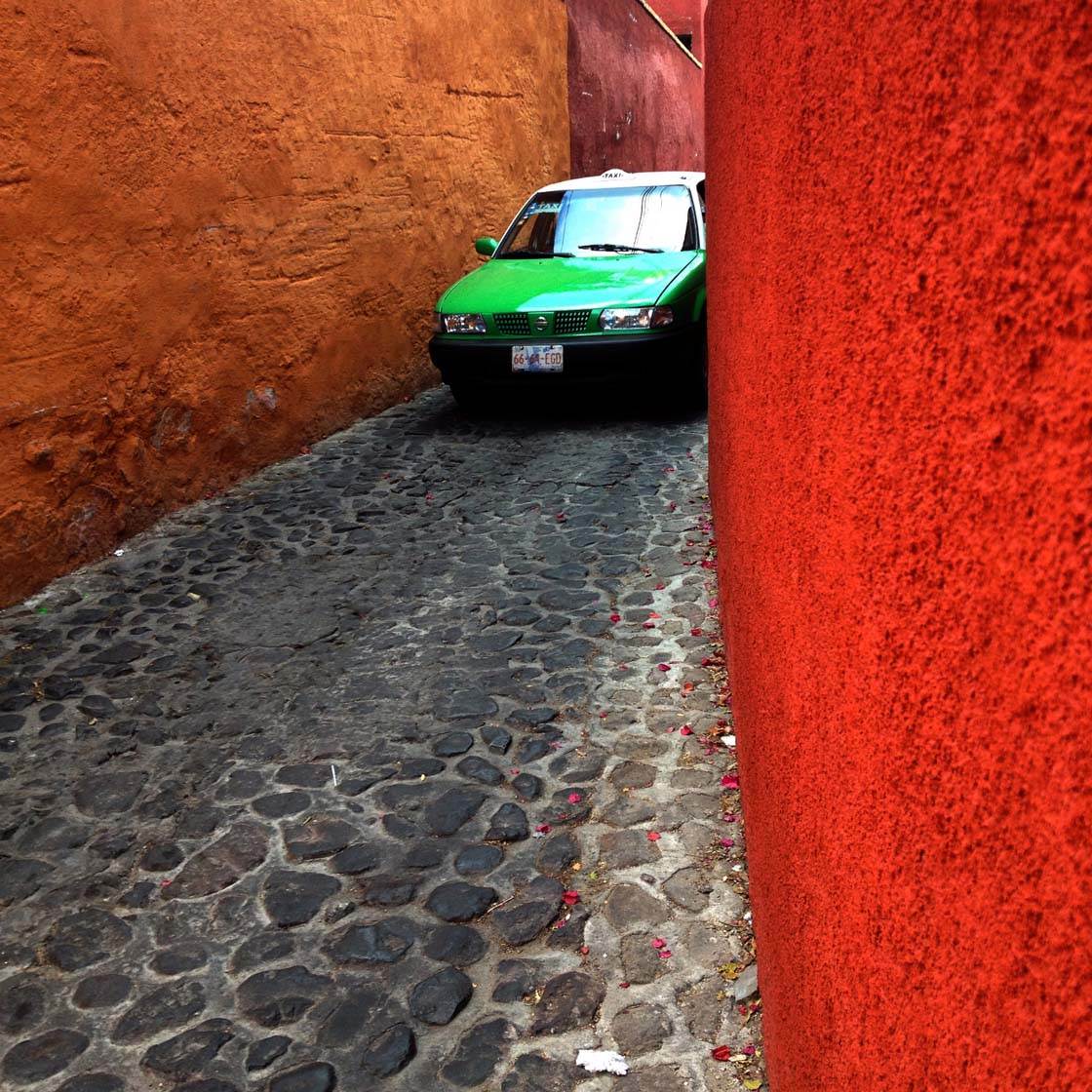
The great thing about photographing vehicles is that they’re usually on a road. And roads are perfect for creating leading lines in your composition.
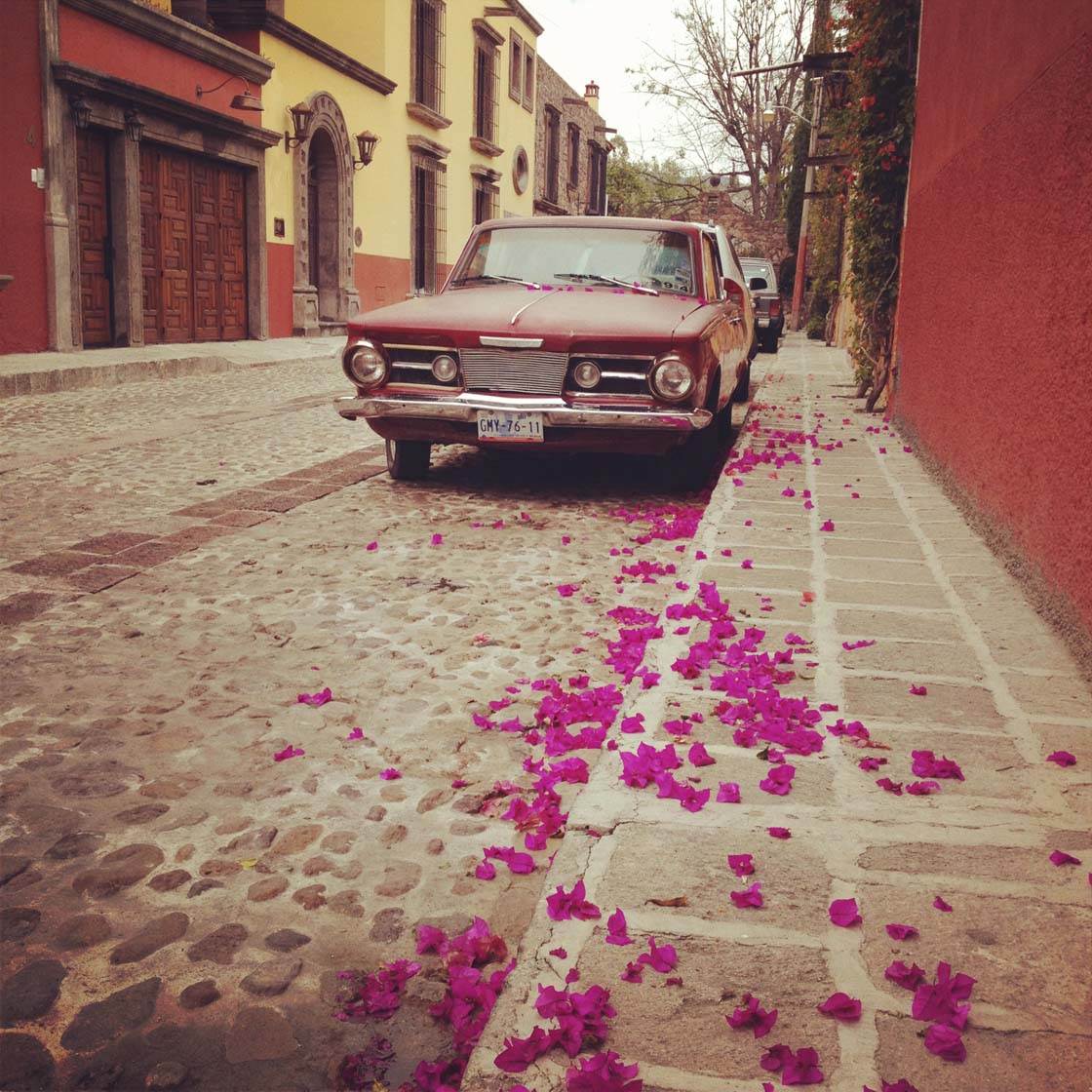
When composing your shot, try to shoot from a perspective where the lines of the road lead from the front of the picture toward the vehicle and into the distance. The aim is to help the viewer to visually “travel through” the scene.
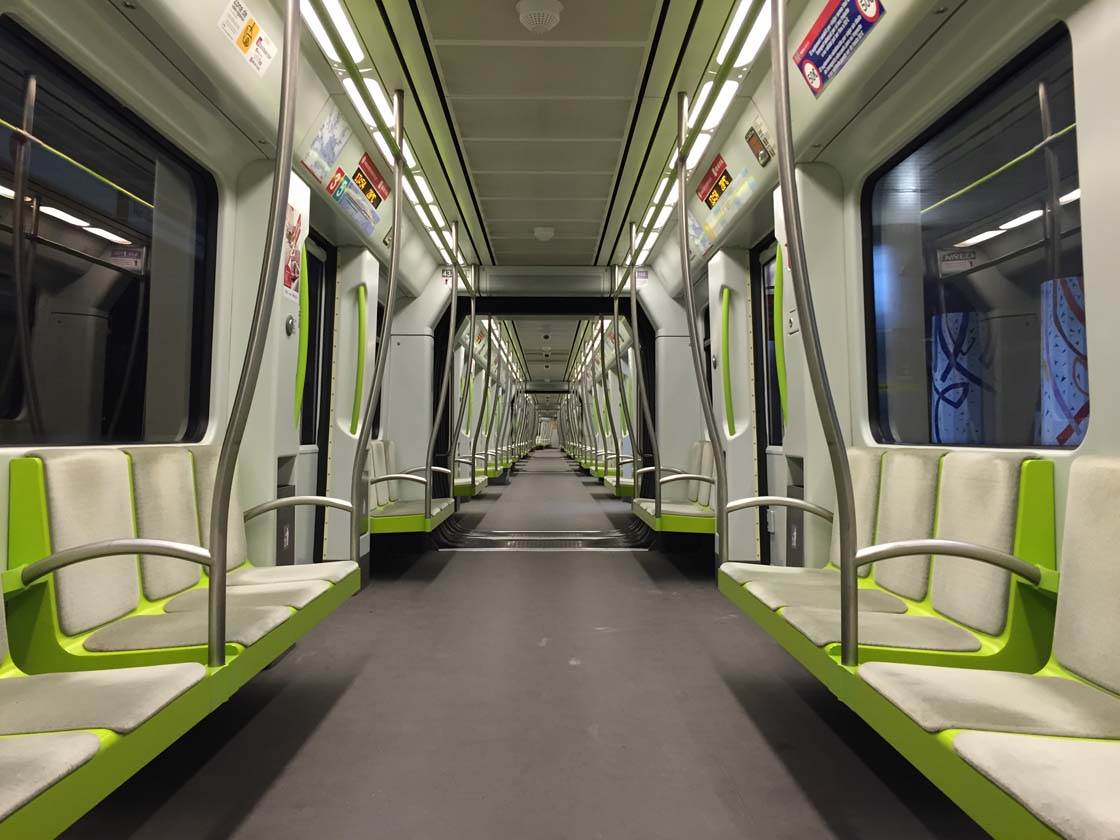
If you’re traveling on public transport, look out for leading lines on the inside of trains and buses. If you’re lucky enough to find yourself in an empty carriage like this, make the most of the opportunity to capture symmetrical shots with strong leading lines.
6. Include A Human Subject
Vehicles make great props for human portraits. You could pose a friend or model on or near a cool looking car or motorcycle (get permission before touching the vehicle if it doesn’t belong to you).
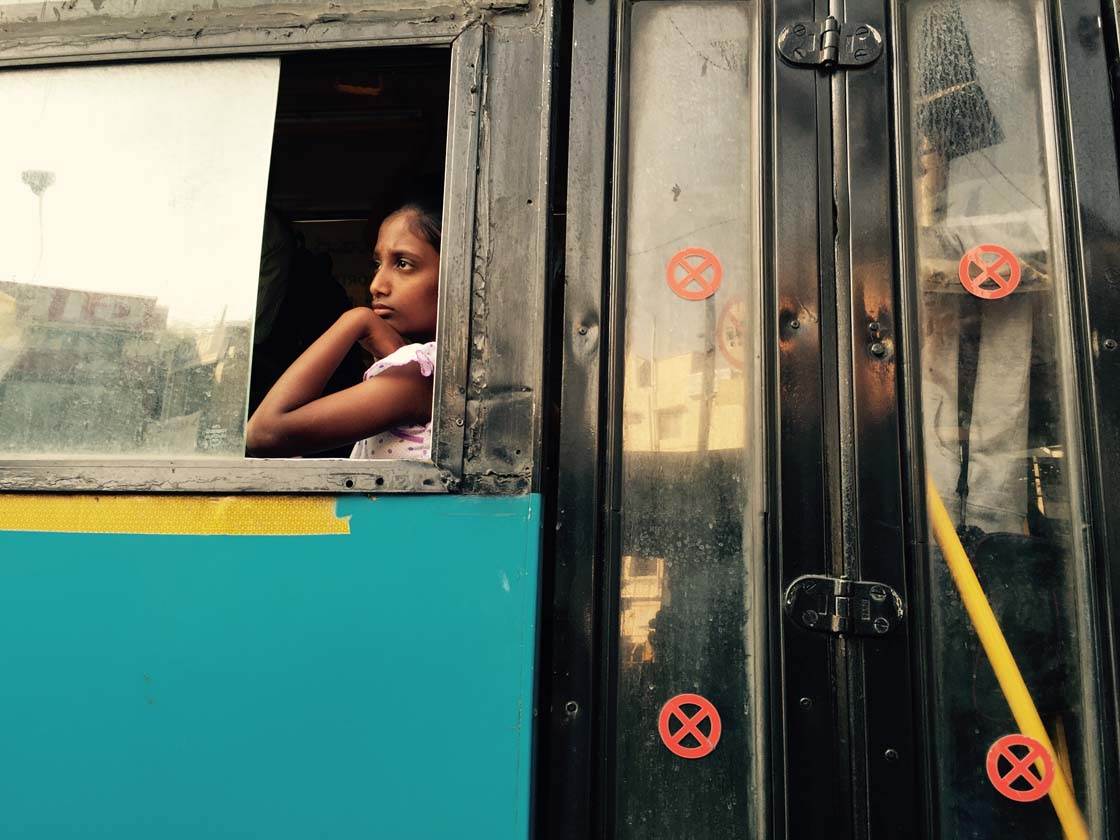
Alternatively, you could go down the street photography route and create portraits on-the-fly by acting quickly with your iPhone camera.
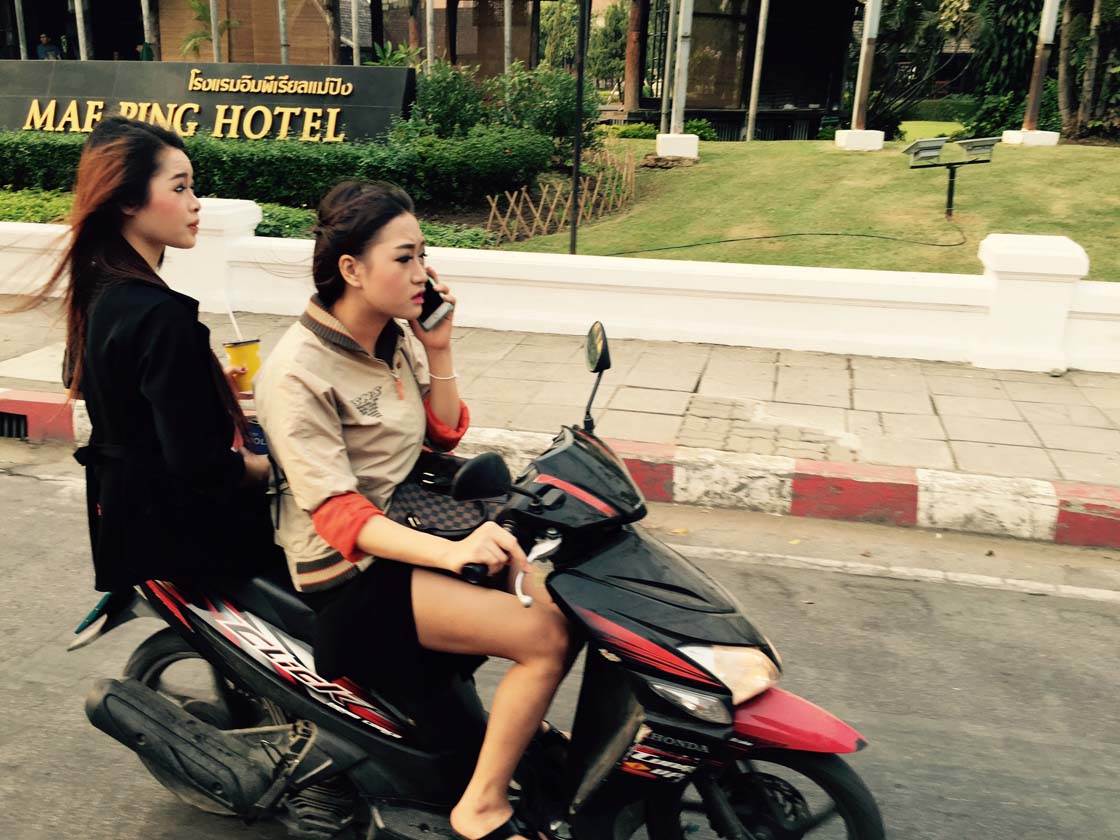
If you’re tired of boring selfies that flood the internet, try to be creative and shoot a self-portrait in a car mirror from a moving vehicle.
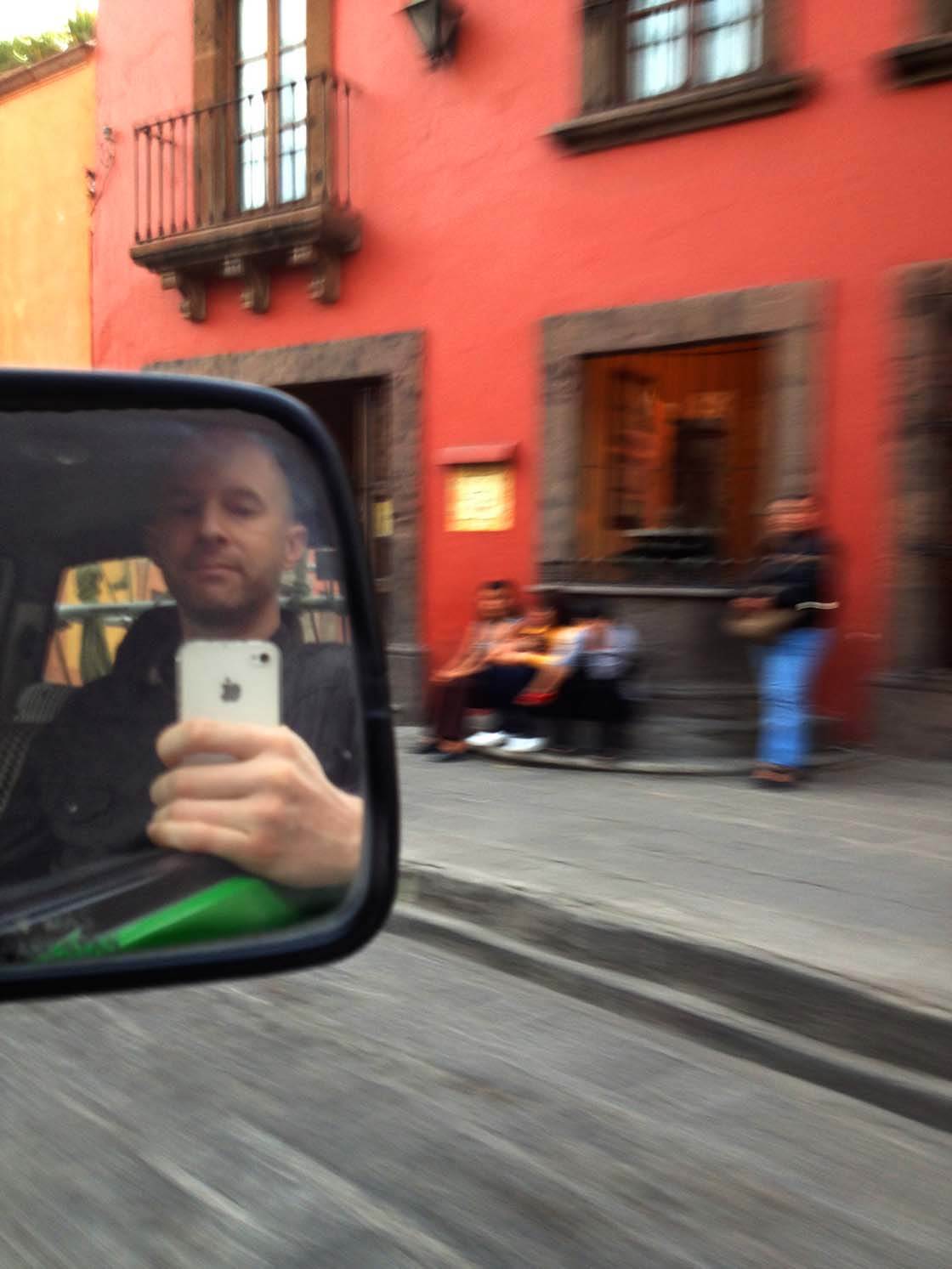
Remember, don’t follow the pack. Look for unique ways to express yourself that the masses haven’t discovered yet.
7. Pan To Create Motion Blur
Panning is a photographic technique whereby the photographer moves (pans) the camera from left to right, right to left, or in a vertical path, in order to follow a moving subject as the photo is being taken.
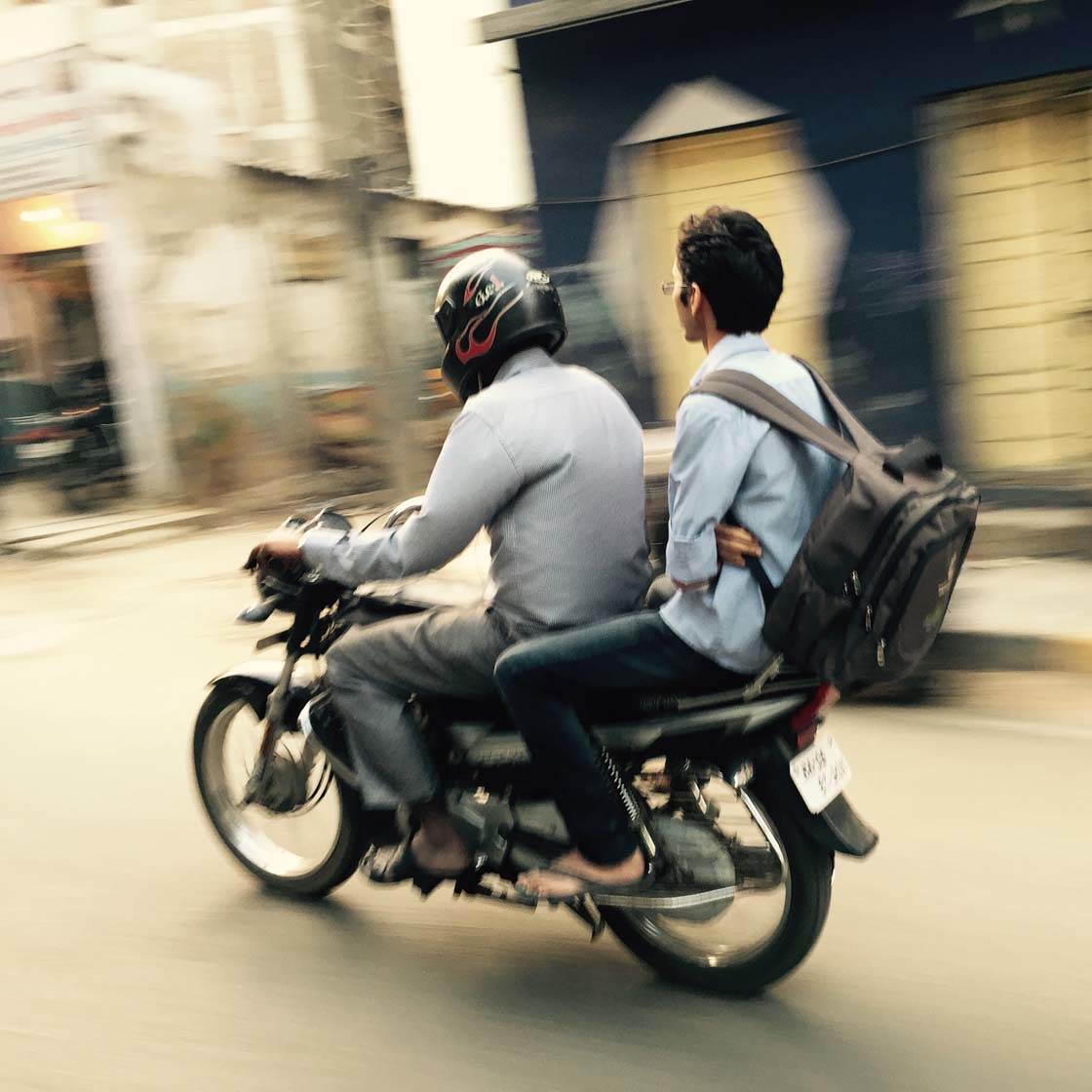
This keeps the moving subject in focus while the background appears with motion blur. In these examples, the moving objects are people driving on scooters.
Panning is a great technique to use with moving vehicles as the motion blur helps to convey a sense of speed.
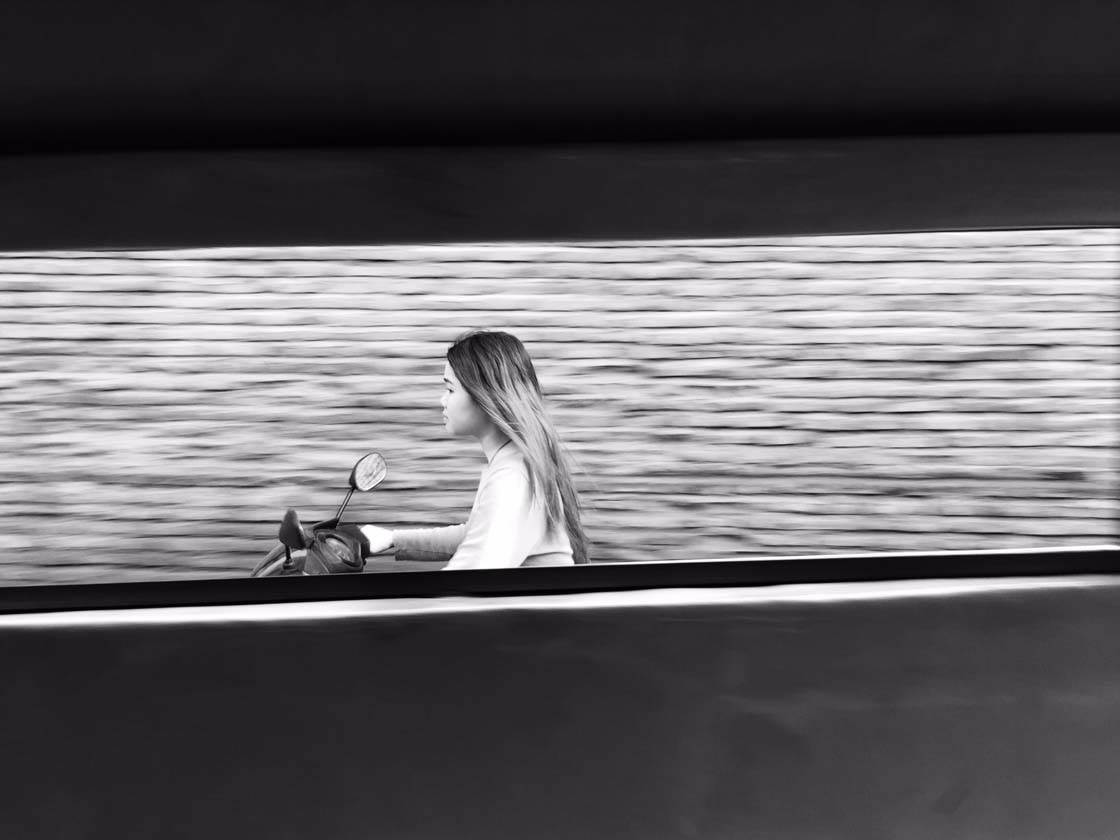
To create a panning shot, get your camera ready when you see a moving vehicle down the road. While the vehicle is getting closer to you, start tracking the vehicle, moving the camera at the same speed as the vehicle is moving past you.
When the vehicle is in front of you or has just passed by you, take the photo but continue the camera movement even after the photo has been taken.
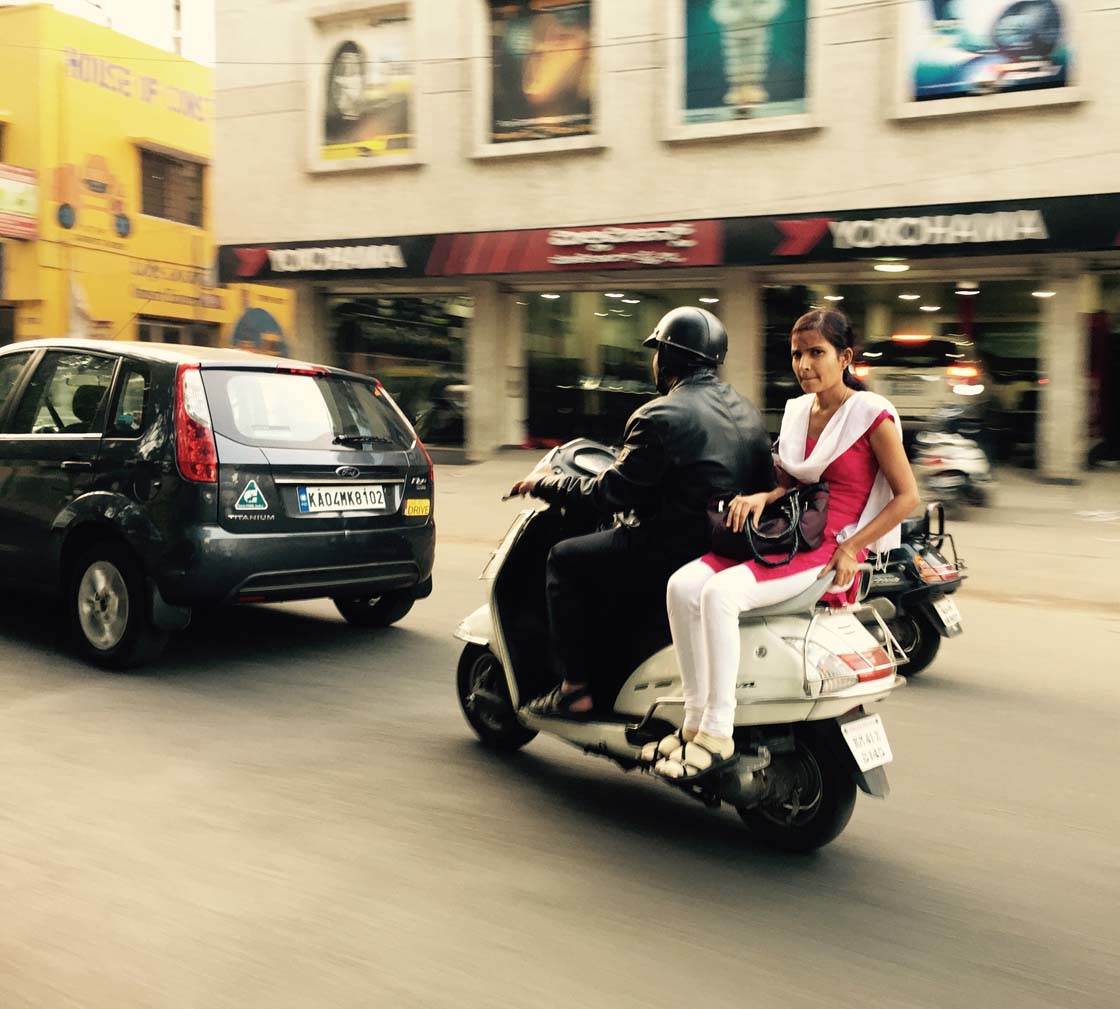
This technique takes practice to get right. Don’t give up if your experiments don’t look good. Keep trying, and you’ll get some very dynamic panning shots!
8. Shoot In Poor Weather
Most people don’t venture out to photograph when the weather is poor, but this is the very time when you should be out creating wonderfully dramatic photos.
Rain, fog, snow and high winds make for very dramatic scenes, and your iPhone photos will stand out in the crowd because everyone else is inside their houses staying warm!
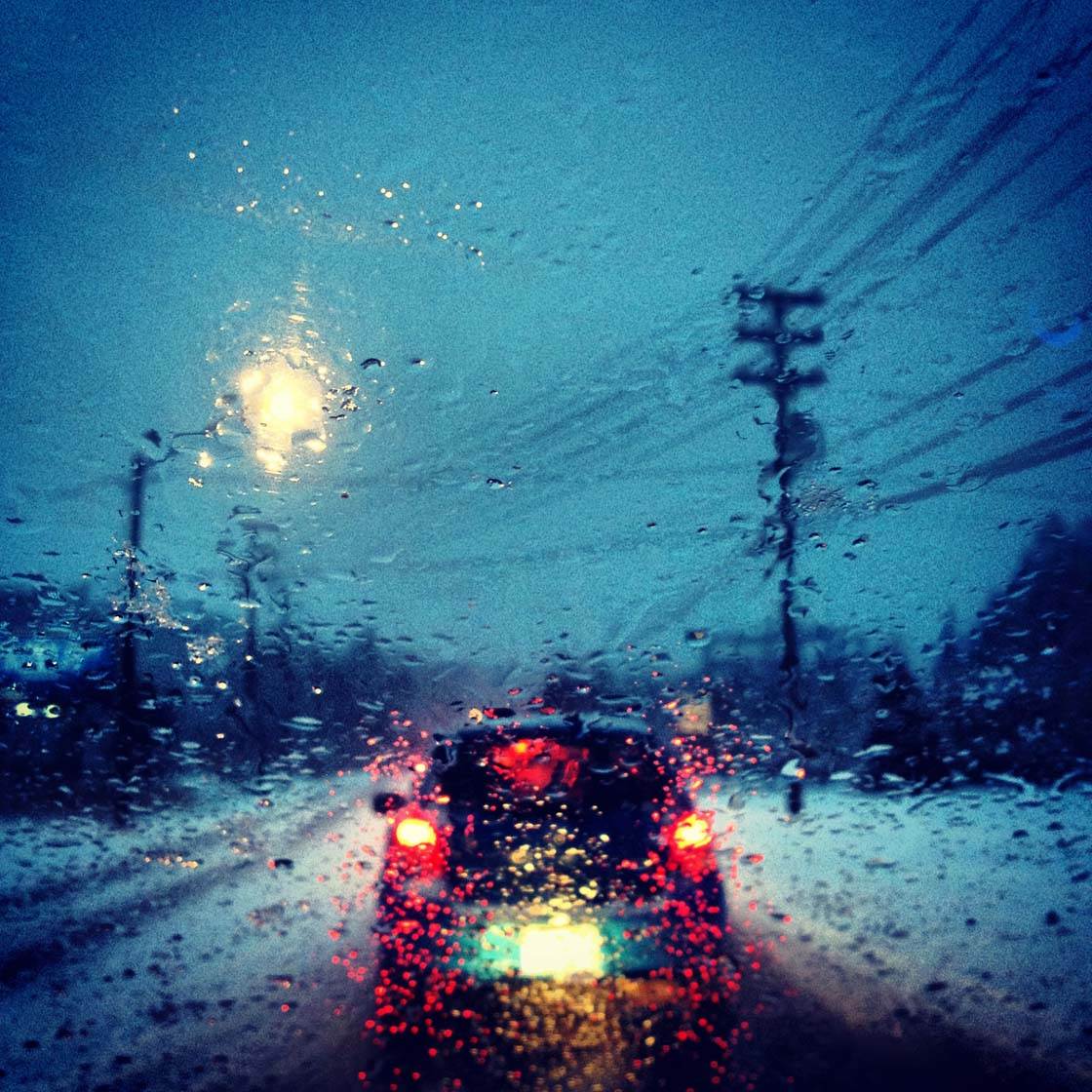
Night time can be an especially good time to shoot. In the photo above I captured the tail lights of the car in front through a windshield covered in water droplets.
On a foggy night, the light from vehicles will create wonderful beams of light as demonstrated in the photo below.

If you’re shooting in daylight, venture out after the rain and capture close-up photos of water droplets on colorful cars. This will create wonderful abstract images and you might even capture some interesting reflections in the droplets.
Another fun technique is to capture puddle reflections. Look out for cars reflected in puddles, then crouch down and capture the reflection from a low angle.
Take a lens cloth with you to wipe your iPhone if it gets wet. If you’re photographing in rain, try your best to keep moisture off the iPhone by using an umbrella to shoot under.
9. Photograph Farm Vehicles
If you live in a rural area, keep your eyes peeled for farm vehicles such as tractors and combine harvesters.
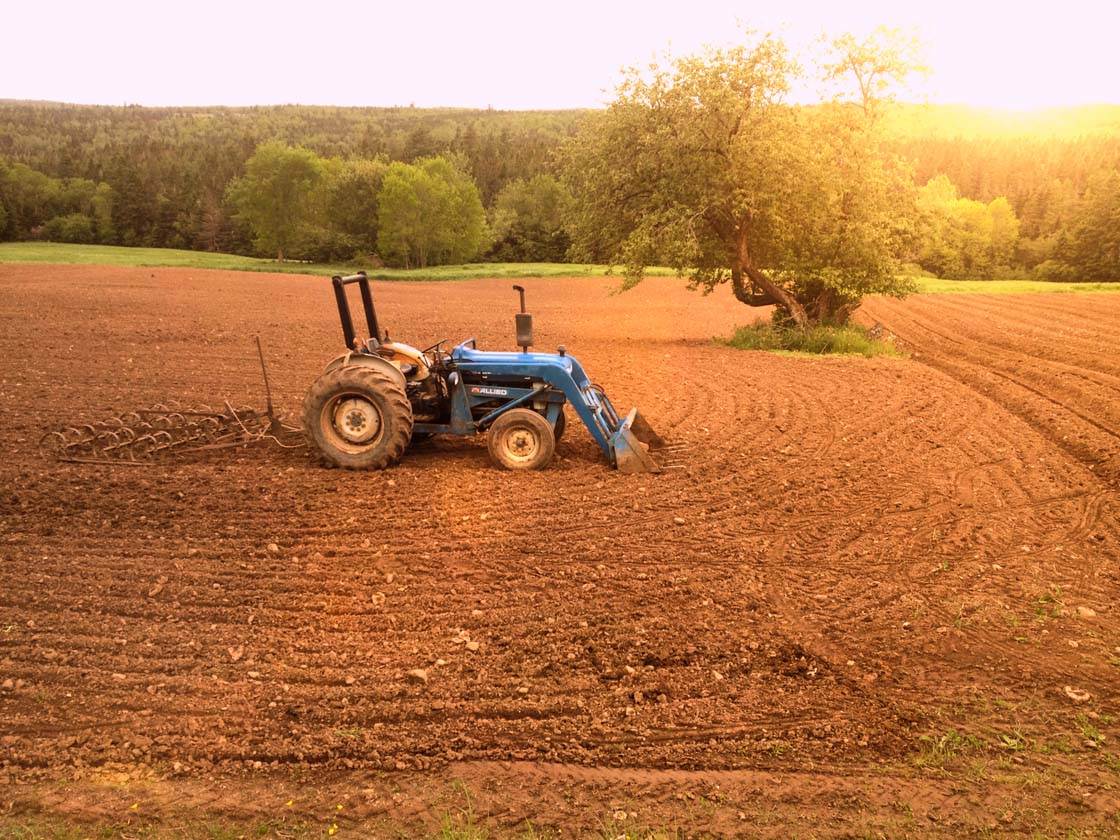
Using a farm vehicle as your subject can add a strong focal point and tell an interesting story in your landscape photography.
And you never know – you might even spot a farm vehicle driving through a town or city. This will make an interesting picture because the vehicle is being captured out of its normal context.
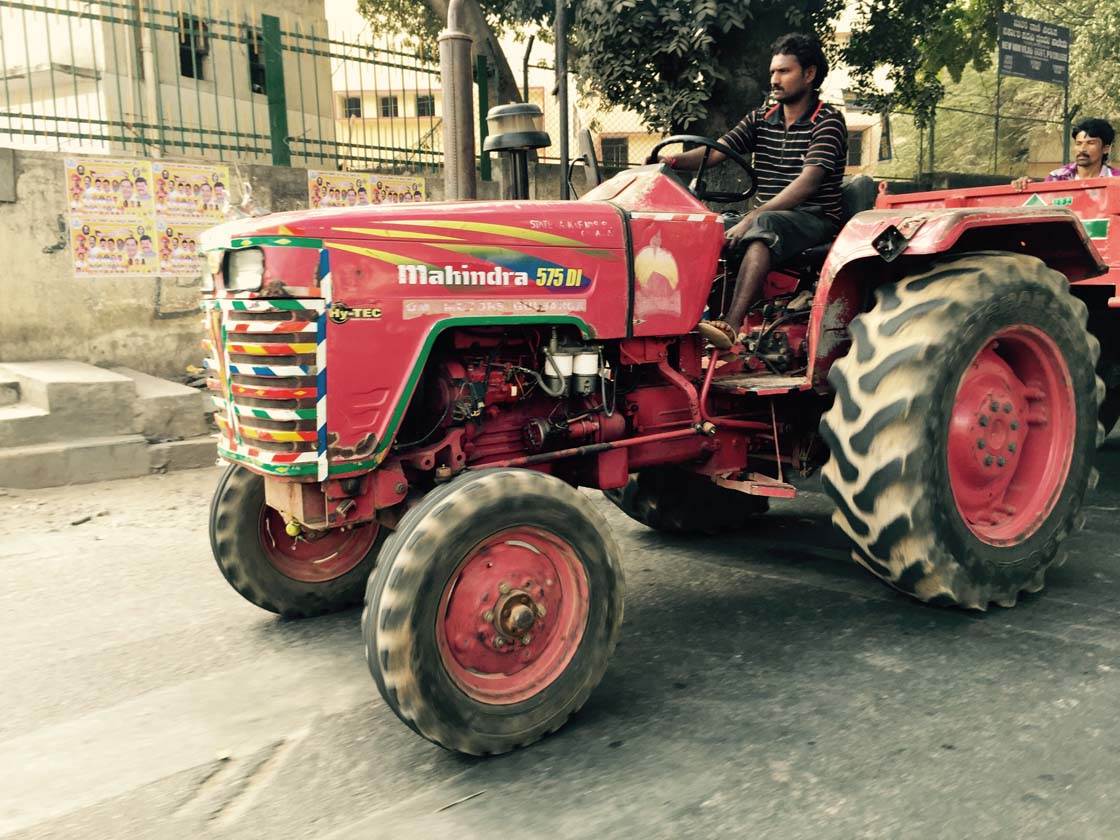
Always have your iPhone ready to shoot so that you don’t miss out on great opportunities like this.
10. Convert To Black & White
While we’re often drawn to cars because of their vibrant colors, sometimes a black and white conversion can improve the overall look of the image.
If you’re photographing old cars, converting the image to black and white can complement the vintage feel.
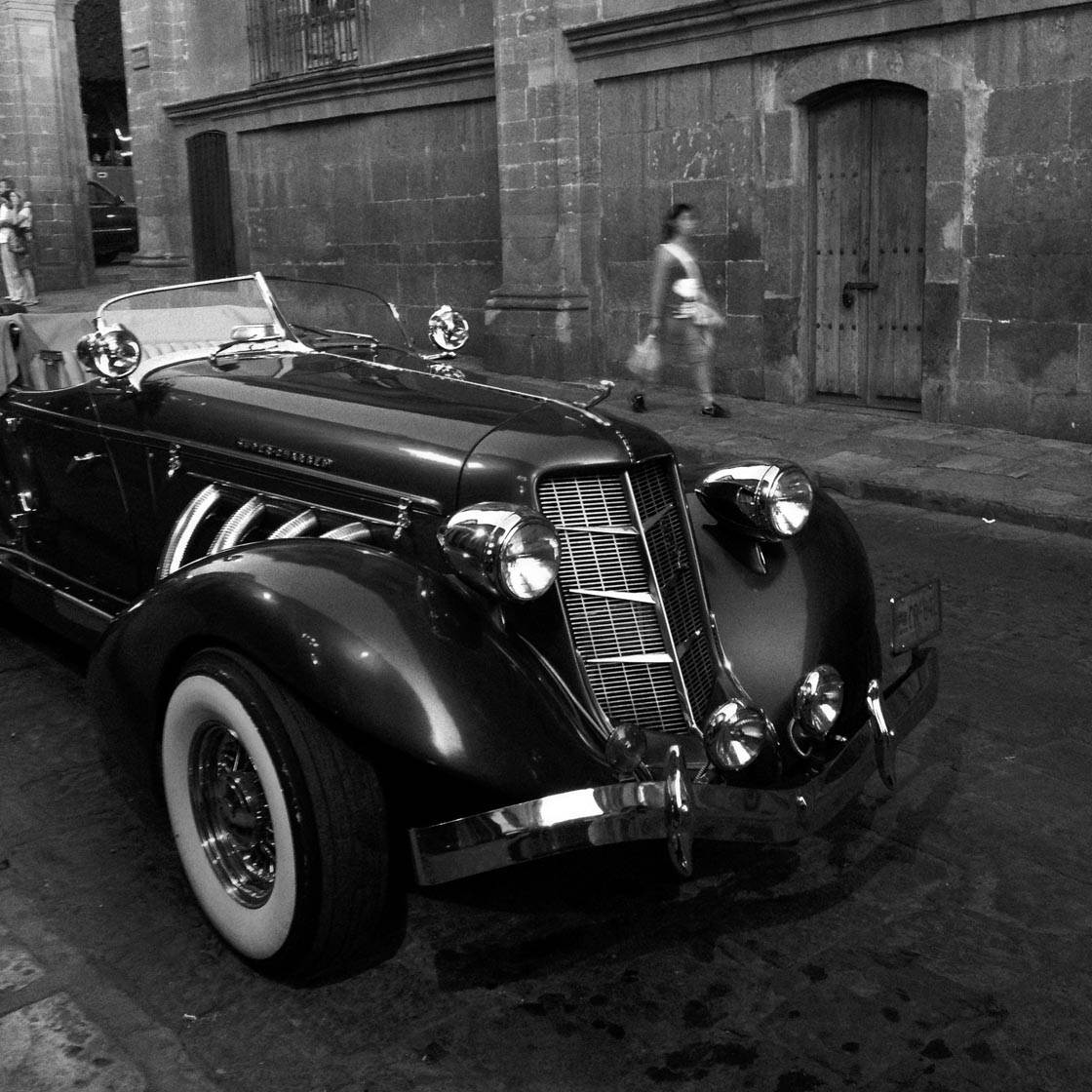
When photographing cars at night, you may find that the artificial light from street lights produces a strong orange or green color cast on the car.

If you feel that your night car photo looks ugly because of the artificial light, you may find it much easier to convert the image to black and white, rather than trying to eliminate the color cast in post-processing.
Another reason for converting to black and white is that it can make problems with over-exposure less obvious. Take a look at the photo of the station wagon below.
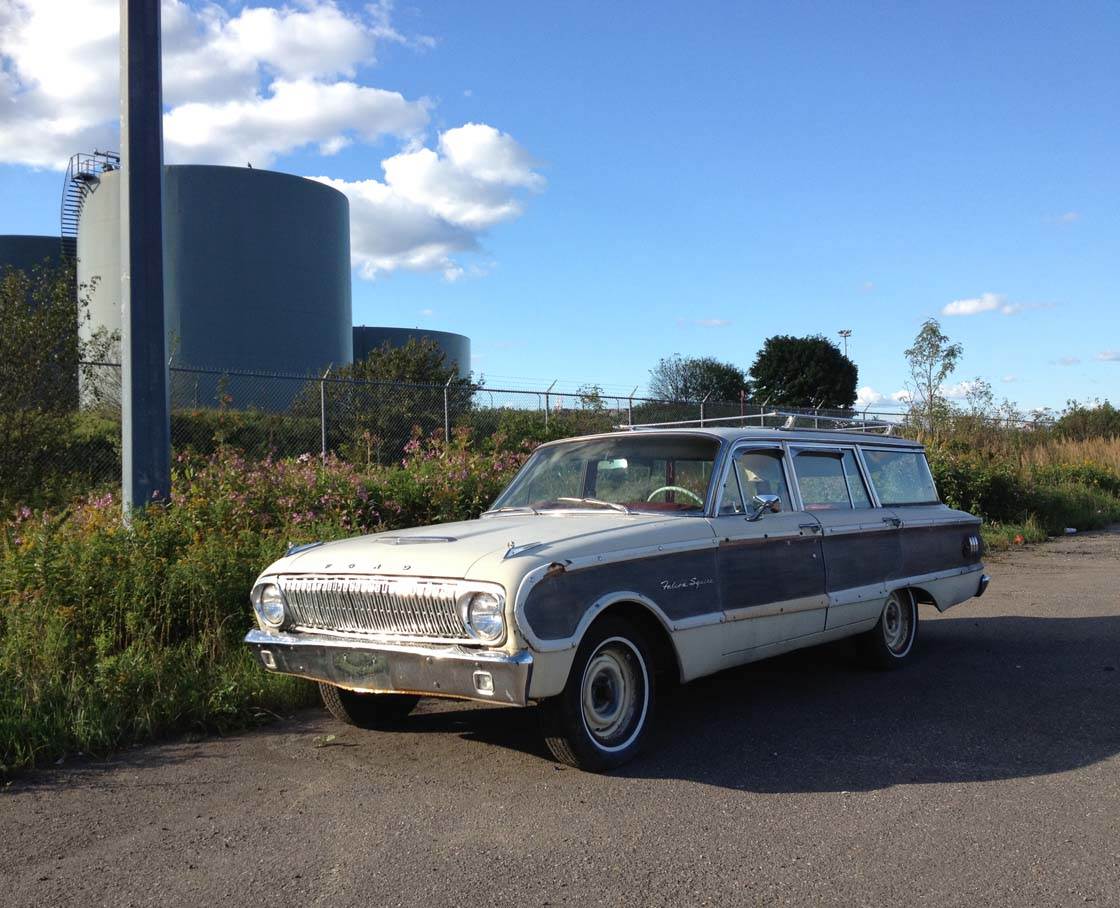
It looks fine, but technically it’s not the greatest photo due to blown-out (overly white) clouds and a poorly exposed car hood.
If you’re a stickler for good exposure, instead of deleting your over-exposed photos, try converting them to black and white.
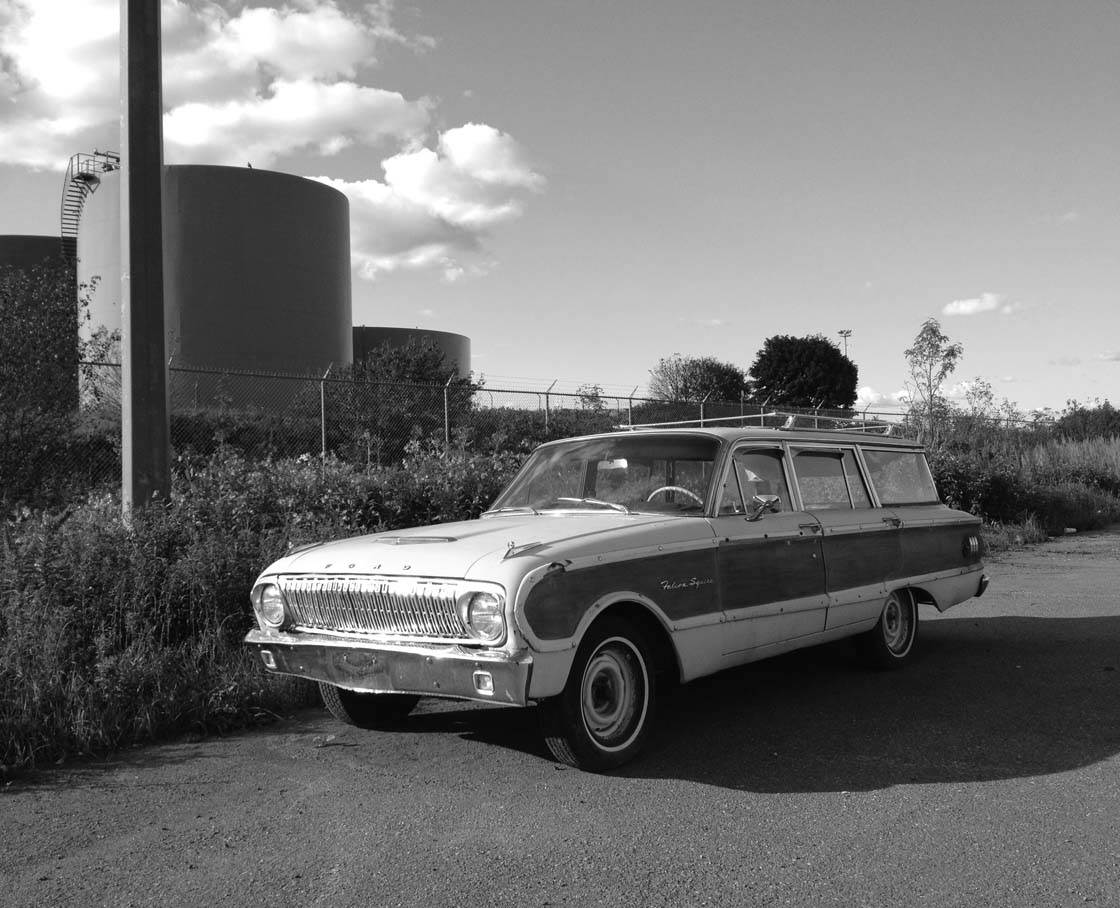
While the blown-out highlights don’t magically correct themselves with this conversion technique, they do become less obvious.
Conclusion
Cars, trucks, motorcycles and other vehicles are great fun to photograph. And the best thing about them is that there are always plenty of them around.
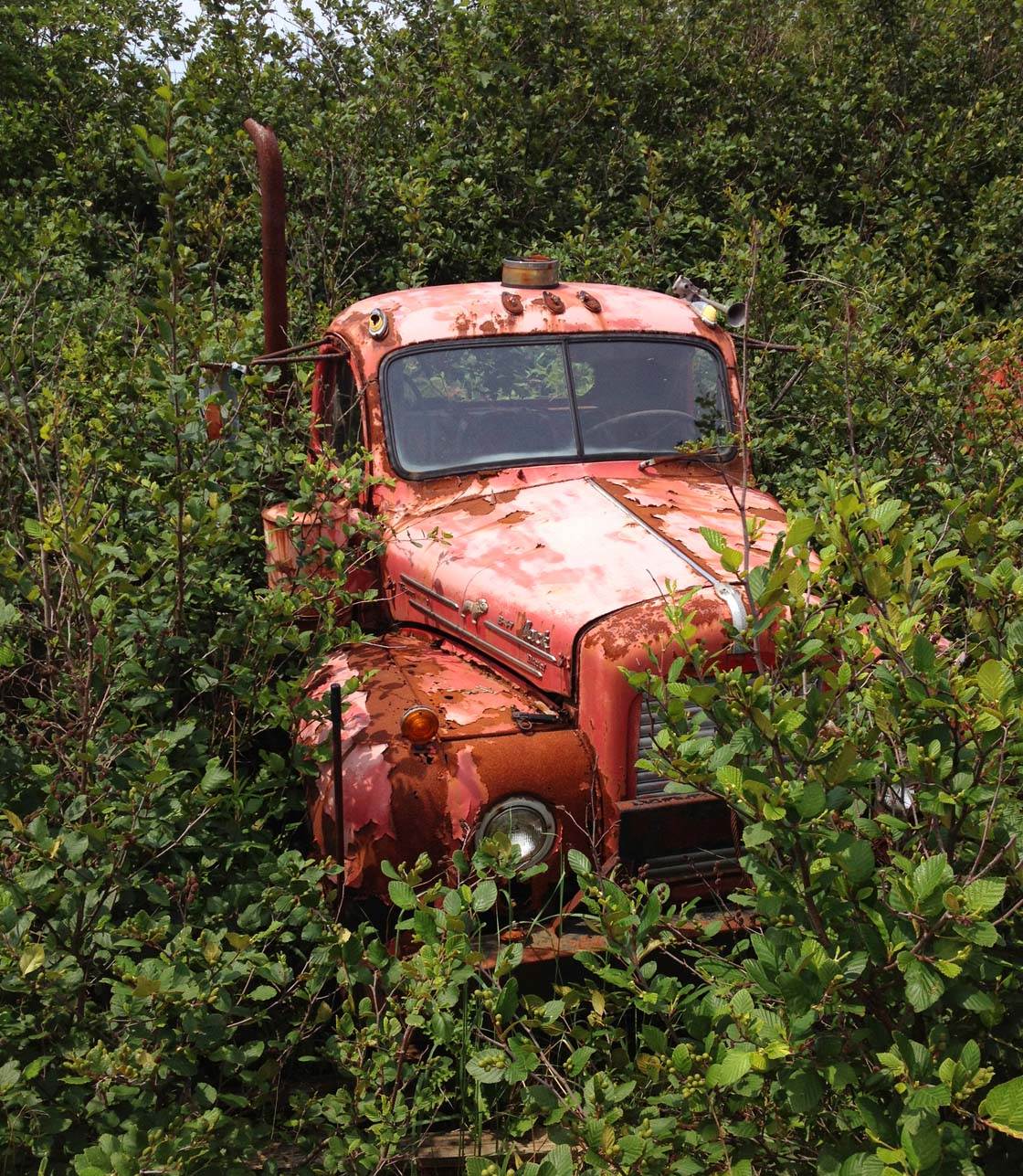
Whether you’re photographing moving or stationary vehicles, think about the story you want to tell, and then use the most appropriate composition and photography techniques to turn your vision into an amazing image.
By thinking carefully about your composition and shooting angle, you can make the most of their color, shape and intricate details.
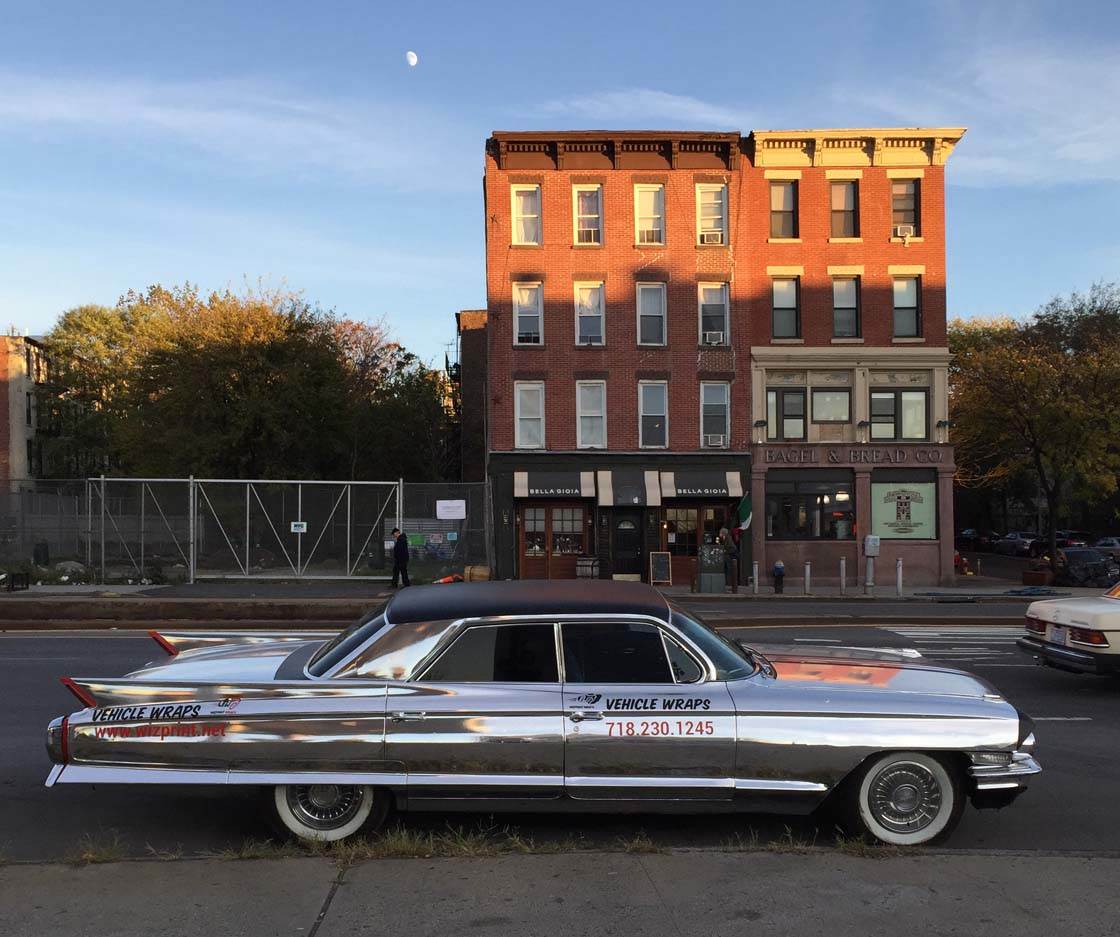
An unlimited supply of colorful and interesting subjects is a photographer’s dream. So vehicles really are the perfect subject for your iPhone photography!


Thanks Ray! I appreciate it.